
Nicolle Lamerichs
Fandom & Media Scholar

Warm Data and Cold Data
Data is not only a way of measuring and categorizing information, it’s a way of seeing the world. In the digital humanities, we often speak about data as something quantifiable – in terms of engagement, clicks and likes. But data is so much more than that, and always requires context.
I’ve been looking into some new data approaches and concepts that you might find interesting.
One of them is warm data .
Warm data is a concept by Nora Bateson and implemented further by The International Bateson Institute. I first read about it in this interview with Brian Massumi , a Deleuzian philosopher who never fails to inspire. In the article, Massumi describes an alter-economy based on cryptocurrency that works as an affect-o-meter. The business model is based on qualities, intensities and relationships, rather than the quantifiable values that are common in our economy.
‘The key, once again, is finding workable solutions to the problem of how to use qualitative analysis to register movements of creative intensity—how to coax numbers into an alliance with qualities of experience. There is a new concept being developed by Nora Bateson that she calls “warm data” that has a similar goal, in relation to basic science, that we’d like to hook into.’
That idea of warm data immediately intrigued me and reminded me of my own research. It evokes ideas about lived experiences and relationships that are so fundamental in queer theory, phenomenology, ethnography and narratives. Warm data, from my point of view, could be about bodies, humans, spaces, relationships. It could be about how we share the world.
The Bateson Institute frames the concept in detail and also applies it to cases and in “warm data labs” all over the world. This lens offers a mix of social research, critical thinking, system thinking. Yes, this is about qualitative data, but a specific type of it: ‘Our work is to look in other ways so that we might find other species of information and new patterns of connection not visible though current methodologies.’
Warm data is about uncovering what’s happening in the world in all its complexity, and analyzing all the parts of a system. It’s data that is hard to study, and often not done justice too. You can read more here . Of course there is other data that we must think about and conceptualize too. To some extent, there is a bias for quantified data emerging in the digital humanities that I am not in favor of. In an upcoming collection for Palgrave, I write about algorithms and hidden data . The data that we can’t see, that is never uploaded, filtered out, or rewritten, and can only be studied in qualitative ways (e.g. through reverse engineering and qualitatively probing how an algorithm works).
I summarized the qualities of warm data and added some of my own in this table.

It seems to me, for instance, that such data can’t be readily sampled but that it needs to be probed, sensed, and experienced (what I dubbed sensing). It seems to me that it strives for depth, rather than large patterns, and emphasizes complex systems over labeling, boxing and categorizing.
The concept of warm data intrigues me. It can point to intensities, relationships, depth. But it also evokes a very phenomenological, intuitive idea of research, which I love, and fits those of us doing ethnography, interviewing, and other methods. Of course warm and cold data could mix which can raise interesting insights as well.
This dichotomy has similarities with other concepts, like…..
- Close-reading versus distant reading , as discussed by Moretti
- Thick data , by Tricia Wang and based on the ideas of Clifford Geerz and his thick description
- Deep data , a concept used more in the professional field, but spreading widely by now
All of these are about emotions, people, and gathered in different way. Warm data is akin to all of these, but puts the emphasis on relationships and systems rather than individuals. This is an interesting twist to thick data, which is about emotion and stories.
There’s more room for new methodologies in our current academia. Still, can any of these concepts easily compartmentalize this scientific reality? Data is messy, hidden, socially constructed. Data is a process rather than an artifact or product. It’s not easily captured in these dichotomies of either/or.
Anyway, what do you think about this concept? Do you find it helpful?
Share this:
Leave a comment cancel reply.

- Already have a WordPress.com account? Log in now.
- Subscribe Subscribed
- Copy shortlink
- Report this content
- View post in Reader
- Manage subscriptions
- Collapse this bar
- How it works

Thematic Analysis – A Guide with Examples
Published by Alvin Nicolas at August 16th, 2021 , Revised On August 29, 2023
Thematic analysis is one of the most important types of analysis used for qualitative data . When researchers have to analyse audio or video transcripts, they give preference to thematic analysis. A researcher needs to look keenly at the content to identify the context and the message conveyed by the speaker.
Moreover, with the help of this analysis, data can be simplified.
Importance of Thematic Analysis
Thematic analysis has so many unique and dynamic features, some of which are given below:
Thematic analysis is used because:
- It is flexible.
- It is best for complex data sets.
- It is applied to qualitative data sets.
- It takes less complexity compared to other theories of analysis.
Intellectuals and researchers give preference to thematic analysis due to its effectiveness in the research.
How to Conduct a Thematic Analysis?
While doing any research , if your data and procedure are clear, it will be easier for your reader to understand how you concluded the results . This will add much clarity to your research.
Understand the Data
This is the first step of your thematic analysis. At this stage, you have to understand the data set. You need to read the entire data instead of reading the small portion. If you do not have the data in the textual form, you have to transcribe it.
Example: If you are visiting an adult dating website, you have to make a data corpus. You should read and re-read the data and consider several profiles. It will give you an idea of how adults represent themselves on dating sites. You may get the following results:
I am a tall, single(widowed), easy-going, honest, good listener with a good sense of humor. Being a handyperson, I keep busy working around the house, and I also like to follow my favourite hockey team on TV or spoil my two granddaughters when I get the chance!! Enjoy most music except Rap! I keep fit by jogging, walking, and bicycling (at least three times a week). I have travelled to many places and RVD the South-West U.S., but I would now like to find that special travel partner to do more travel to warm and interesting countries. I now feel it’s time to meet a nice, kind, honest woman who has some of the same interests as I do; to share the happy times, quiet times, and adventures together
I enjoy photography, lapidary & seeking collectibles in the form of classic movies & 33 1/3, 45 & 78 RPM recordings from the 1920s, ’30s & ’40s. I am retired & looking forward to travelling to Canada, the USA, the UK & Europe, China. I am unique since I do not judge a book by its cover. I accept people for who they are. I will not demand or request perfection from anyone until I am perfect, so I guess that means everyone is safe. My musical tastes range from Classical, big band era, early jazz, classic ’50s & 60’s rock & roll & country since its inception.
Development of Initial Coding:
At this stage, you have to do coding. It’s the essential step of your research . Here you have two options for coding. Either you can do the coding manually or take the help of any tool. A software named the NOVIC is considered the best tool for doing automatic coding.
For manual coding, you can follow the steps given below:
- Please write down the data in a proper format so that it can be easier to proceed.
- Use a highlighter to highlight all the essential points from data.
- Make as many points as possible.
- Take notes very carefully at this stage.
- Apply themes as much possible.
- Now check out the themes of the same pattern or concept.
- Turn all the same themes into the single one.
Example: For better understanding, the previously explained example of Step 1 is continued here. You can observe the coded profiles below:
Make Themes
At this stage, you have to make the themes. These themes should be categorised based on the codes. All the codes which have previously been generated should be turned into themes. Moreover, with the help of the codes, some themes and sub-themes can also be created. This process is usually done with the help of visuals so that a reader can take an in-depth look at first glance itself.
Extracted Data Review
Now you have to take an in-depth look at all the awarded themes again. You have to check whether all the given themes are organised properly or not. It would help if you were careful and focused because you have to note down the symmetry here. If you find that all the themes are not coherent, you can revise them. You can also reshape the data so that there will be symmetry between the themes and dataset here.
For better understanding, a mind-mapping example is given here:
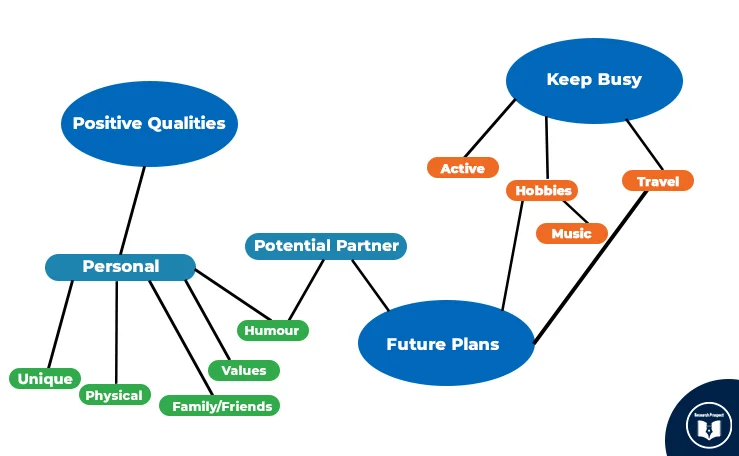
Reviewing all the Themes Again
You need to review the themes after coding them. At this stage, you are allowed to play with your themes in a more detailed manner. You have to convert the bigger themes into smaller themes here. If you want to combine some similar themes into a single theme, then you can do it. This step involves two steps for better fragmentation.
You need to observe the coded data separately so that you can have a precise view. If you find that the themes which are given are following the dataset, it’s okay. Otherwise, you may have to rearrange the data again to coherence in the coded data.
Corpus Data
Here you have to take into consideration all the corpus data again. It would help if you found how themes are arranged here. It would help if you used the visuals to check out the relationship between them. Suppose all the things are not done accordingly, so you should check out the previous steps for a refined process. Otherwise, you can move to the next step. However, make sure that all the themes are satisfactory and you are not confused.
When all the two steps are completed, you need to make a more précised mind map. An example following the previous cases has been given below:
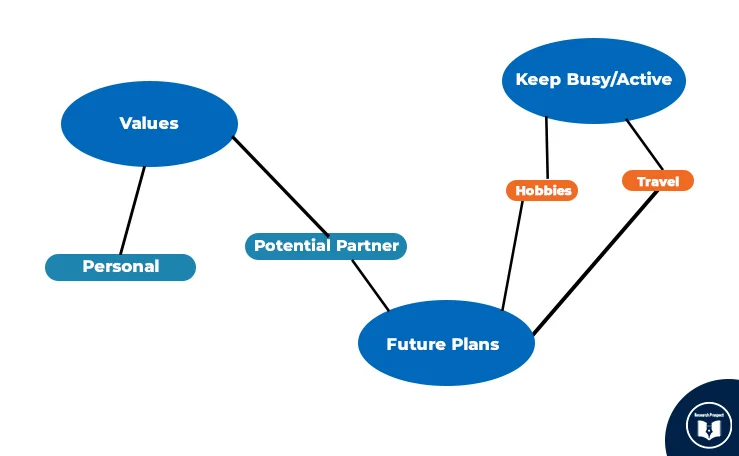
Define all the Themes here
Now you have to define all the themes which you have given to your data set. You can recheck them carefully if you feel that some of them can fit into one concept, you can keep them, and eliminate the other irrelevant themes. Because it should be precise and clear, there should not be any ambiguity. Now you have to think about the main idea and check out that all the given themes are parallel to your main idea or not. This can change the concept for you.
The given names should be so that it can give any reader a clear idea about your findings. However, it should not oppose your thematic analysis; rather, everything should be organised accurately.
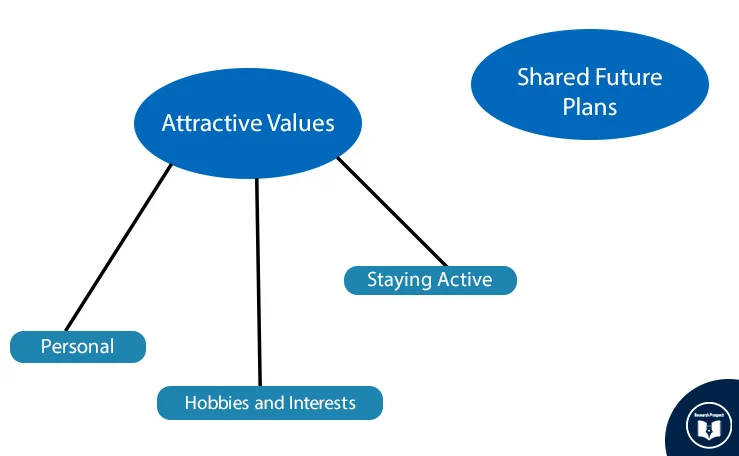
Does your Research Methodology Have the Following?
- Great Research/Sources
- Perfect Language
- Accurate Sources
If not, we can help. Our panel of experts makes sure to keep the 3 pillars of Research Methodology strong.

Also, read about discourse analysis , content analysis and survey conducting . we have provided comprehensive guides.
Make a Report
You need to make the final report of all the findings you have done at this stage. You should include the dataset, findings, and every aspect of your analysis in it.
While making the final report , do not forget to consider your audience. For instance, you are writing for the Newsletter, Journal, Public awareness, etc., your report should be according to your audience. It should be concise and have some logic; it should not be repetitive. You can use the references of other relevant sources as evidence to support your discussion.
Frequently Asked Questions
What is meant by thematic analysis.
Thematic Analysis is a qualitative research method that involves identifying, analyzing, and interpreting recurring themes or patterns in data. It aims to uncover underlying meanings, ideas, and concepts within the dataset, providing insights into participants’ perspectives and experiences.
You May Also Like
The authenticity of dissertation is largely influenced by the research method employed. Here we present the most notable research methods for dissertation.
A survey includes questions relevant to the research topic. The participants are selected, and the questionnaire is distributed to collect the data.
Quantitative research is associated with measurable numerical data. Qualitative research is where a researcher collects evidence to seek answers to a question.
USEFUL LINKS
LEARNING RESOURCES

COMPANY DETAILS

- How It Works

The Ultimate Guide to Qualitative Research - Part 2: Handling Qualitative Data

- Handling qualitative data
- Transcripts
- Field notes
- Survey data and responses
- Visual and audio data
- Data organization
- Data coding
- Coding frame
- Auto and smart coding
- Organizing codes
- Qualitative data analysis
Content analysis
- Introduction
What is meant by thematic analysis?
The thematic analysis process, thematic analysis in other research methods, using atlas.ti for qualitative analysis, considerations for thematic analysis.
- Thematic analysis vs. content analysis
- Narrative research
- Phenomenological research
Discourse analysis
Grounded theory.
- Deductive reasoning
- Inductive reasoning
- Inductive vs. deductive reasoning
- Qualitative data interpretation
- Qualitative analysis software
Thematic analysis
One of the most straightforward forms of qualitative data analysis involves the identification of themes and patterns that appear in otherwise unstructured qualitative data . Thematic analysis is an integral component of qualitative research because it provides an entry point into analyzing qualitative data.
Let's look at thematic analysis, its role in qualitative research methods , and how ATLAS.ti can help you form themes from raw data to generate a theoretical framework .
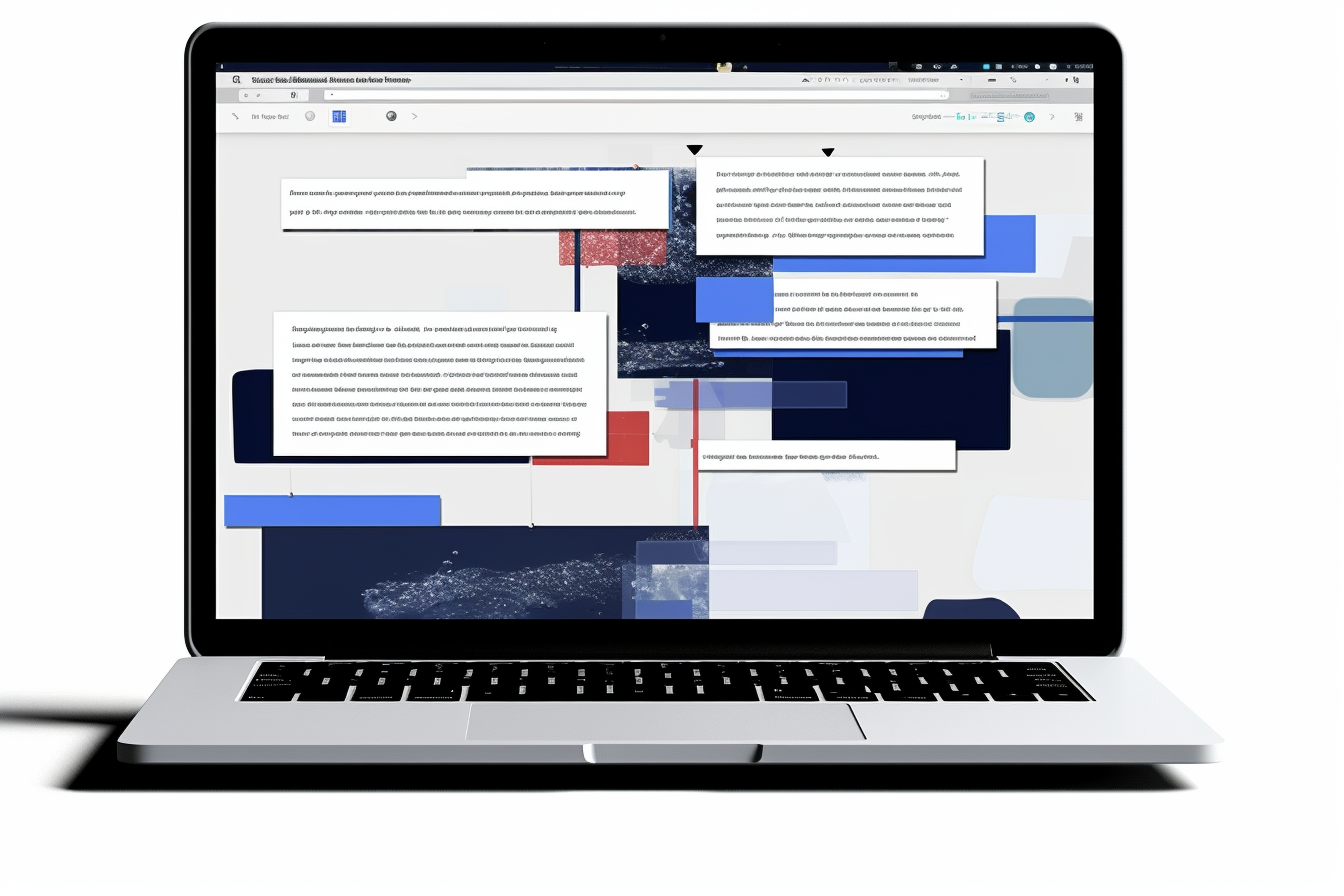
The main objective of research is to order data into meaningful patterns and generate new knowledge arising from theories about that data. Quantitative data is analyzed to measure a phenomenon's quantifiable aspects (e.g., an element's melting point, the effective income tax rate in the suburbs). The advantage of quantitative research is that data is often already structured, or at least easily structured, to quickly draw insights from numerical values.
On the other hand, some phenomena cannot be easily quantified, or they require conceptual development before they can be quantified. For example, what do people mean when they think of a movie or TV show as "good"? In the everyday world, people in a casual discussion may judge the quality of entertainment as a matter of personal preference, something that cannot be defined, let alone universally understood.
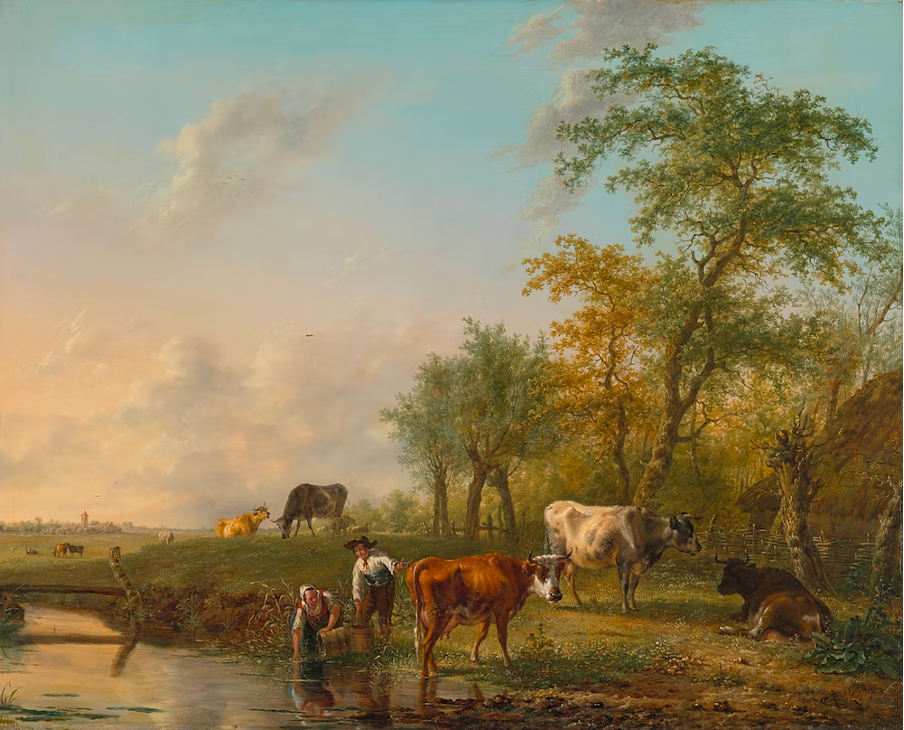
As a result, researchers analyze qualitative data for identifying themes or phenomena that occur often or in telling patterns. In the case of TV shows, a collection of reviews of TV shows may frequently mention the acting, the script writing, and the production values, among other things. If these aspects are mentioned the most often, researchers can think of these as the themes determining the quality of a given TV show.
A useful metaphor for thematic analysis
Even if this is an easy concept to grasp, realizing this concept in qualitative research is a significant challenge. The biggest consideration for thematic analysis is that qualitative data is often unstructured and requires some organization to make it relevant to researchers and their audience.
Imagine that you have a bag of marbles. Each marble has one of a set of different colors. If you were to sort the marbles by color, you could determine how many colors are in the bag and which colors are the most common.
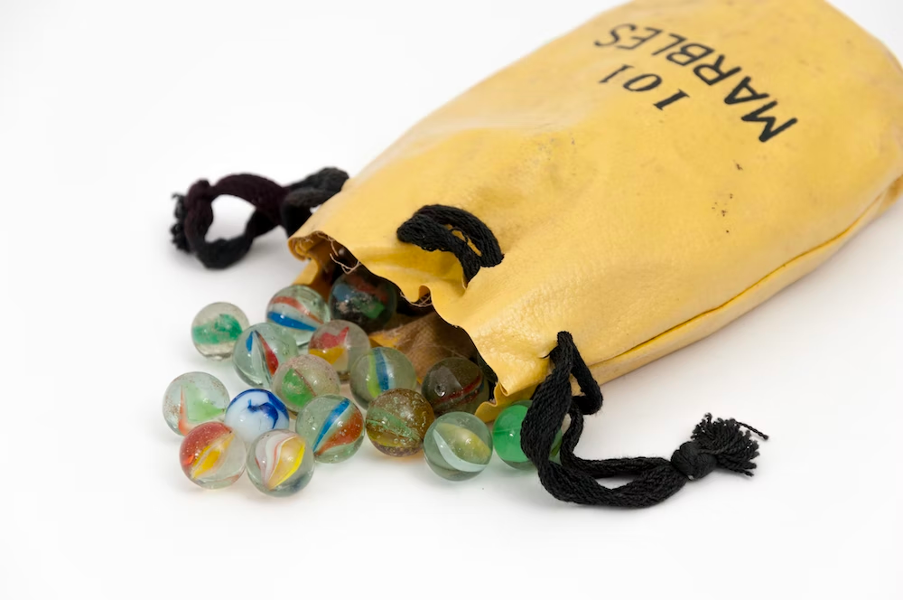
The thematic analysis process is similar to sorting different-colored marbles. Instead of sorting colors, you are sorting themes in a data set to determine which themes appear the most often or to identify patterns among these themes.
After your initial analysis, you can take this one step further and separate "dark" colors from "light" colors or "warm" colors from "cool" colors. Blue and green are distinctly different colors, but you can group them under the "cool" category of colors to form a more overarching theme.

Turn raw data into broader insights with ATLAS.ti
Our powerful data analysis software is available with a free trial.
A simple example of thematic analysis
Imagine a simple research question : how do teachers determine if a student's essay is good? Suppose you have a set of transcripts of interviews with teachers discussing writing classes and students' essays. In this case, the objective of thematic analysis is to determine the main factors teachers use to determine the quality of a piece of writing.
As you read the transcripts, you might find that teachers share some common answers. Of course, you might have an intuition that correct grammar and spelling are important, which will likely be confirmed by the teachers in their interviews. However, other considerations might surface in the data.
The next question in this casual thematic analysis is, what considerations appear most often? A few teachers may occasionally mention the size and typeface of the text as deciding factors, but more often they might say that the flow and organization of students' writing are more important. Analyzing the occurrences and patterns among themes across your transcripts can help you develop an answer to your research question.
The subjectivity of themes
One challenge is that themes in qualitative analysis, as with determining the themes of good writing, are not as visible to the naked eye as colors on a marble. The color "red" is relatively easy to see, but the fields in which thematic analysis is often applied do not deal with concepts that can necessarily be seen "objectively." It is up to the researcher to derive themes from the data from an inductive approach. Researchers can also utilize deductive approaches if they want to analyze their data according to themes that have been previously identified in other research.

Think about the picture up above. To the naked eye, these children are holding hands. But themes that can be interpreted from this picture may include "friendship," "happiness," or even "family." The thematic analysis of pictures like this one often depends on a researcher's theoretical commitments, knowledge base, and cultural perspective.
This also means that you are responsible for explaining how you arrived at the themes arising from your data set. While colors are intuitively easy to distinguish, you are often required to explain more subjective codes and themes like "resilience" or "entitlement" so that you and your research audience have a common understanding of your data analysis .
This explanation should account for who you are as a researcher and how you see the data (since, after all, a word like "resilience" can mean different things to different people). A fully reflexive thematic analysis documents and presents where the researcher is relative to their data and to their research audience.

Applications for thematic analysis
Many disciplines within qualitative research employ thematic analysis to make sense of social phenomena. For instances, these fields might be:
- psychotherapy research
- qualitative psychology
- cultural anthropology
In a nutshell, any research discipline that relies on the understanding of social phenomena or insights that may not easily be quantifiable will attract researchers engaged in thematic analysis. Moreover, any exploratory research design lends itself easily to the identification of previously unknown themes that can later be used in a qualitative, quantitative, or confirmatory research project.
Common forms of data collection
Thematic analysis can involve any number of qualitative research methods to collect data, including:
- focus groups
- observations
- literature reviews
Any unstructured data set, particularly any data set that captures social phenomena, can benefit from thematic analysis. The main consideration in ensuring rigor in data collection for thematic analysis is ensuring that your data is representative of the population or phenomenon you are trying to capture.
Virginia Braun and Victoria Clarke are the key researchers involved in making thematic analysis a commonly utilized approach in qualitative research . A quick search for their scholarship will tell you the basic steps involved in thematic analysis:
- Become familiar with the data
- Generate codes from the data
- Generate themes based on the codes
- Review the potential themes
- Define the themes for the final reporting
In a nutshell, thematic analysis requires the researcher to look at their data, summarize their data with codes , and develop those codes to the extent that they can contribute a broader understanding of the context from which the data is collected.
While these are the key points in a robust and rigorous thematic analysis , there are understated parts of the qualitative research process that can often be taken for granted but must never be overlooked to ensure that researchers can analyze their data quickly and with as few challenges as possible.
The process in greater detail
Thematic analysis relies on research questions that are exploratory in nature, thus requiring an inductive approach to examining the data. While you might rely on an existing theoretical framework to decide your research questions and collect all the data for your project, thematic analysis primarily looks at your data inductively for what it says and what it says most often.
After data collection, you need to organize the data in some way to make the data analysis process easier (or, at minimum, possible). A data set in qualitative research is often akin to a crowd of people where individuals move in any direction without any sense of organization. This is a challenge if your research question involves understanding the crowd's age, gender, ethnicity, or style of clothing.

The role of qualitative researchers at this stage is to sort out the crowd. In this example, perhaps this means having the crowd split into different groups according to those demographic identifiers to see which groups are the largest. Reorganizing the crowd from what was previously a group of wandering individuals can offer a better sense of who is in the room.
Qualitative data is often similarly unstructured and in need of reorganization. When dealing with thematic analysis, you need to reorganize the information so that the themes become more apparent to you and your research audience. In most cases, this means reducing the entire data set, as large as it might be, into a more concise form that allows for a more feasible analysis .

Codes and themes are forms of data reduction that address this need. In a thematic analysis involving qualitative data analysis software , researchers code their data by applying short but descriptive phrases to larger data segments to summarize them for later analysis. Later stages of thematic analysis reorganize these codes into larger categories and then themes, where ultimately the themes support contribution to meaningful insights and existing theory.
As you progress in the coding process, you should start to notice that distinct codes may be related to each other. In a sense, codes provide researchers with visual data that they can examine to generate useful themes. ATLAS.ti, for example, lets you examine your codes in the margin to give you a sense of which codes and themes frequently appear in your data. As you code your data, you can apply colors to your codes. This is a flexible method that allows you to create preliminary categories that you can examine visually for their abundance and patterns.
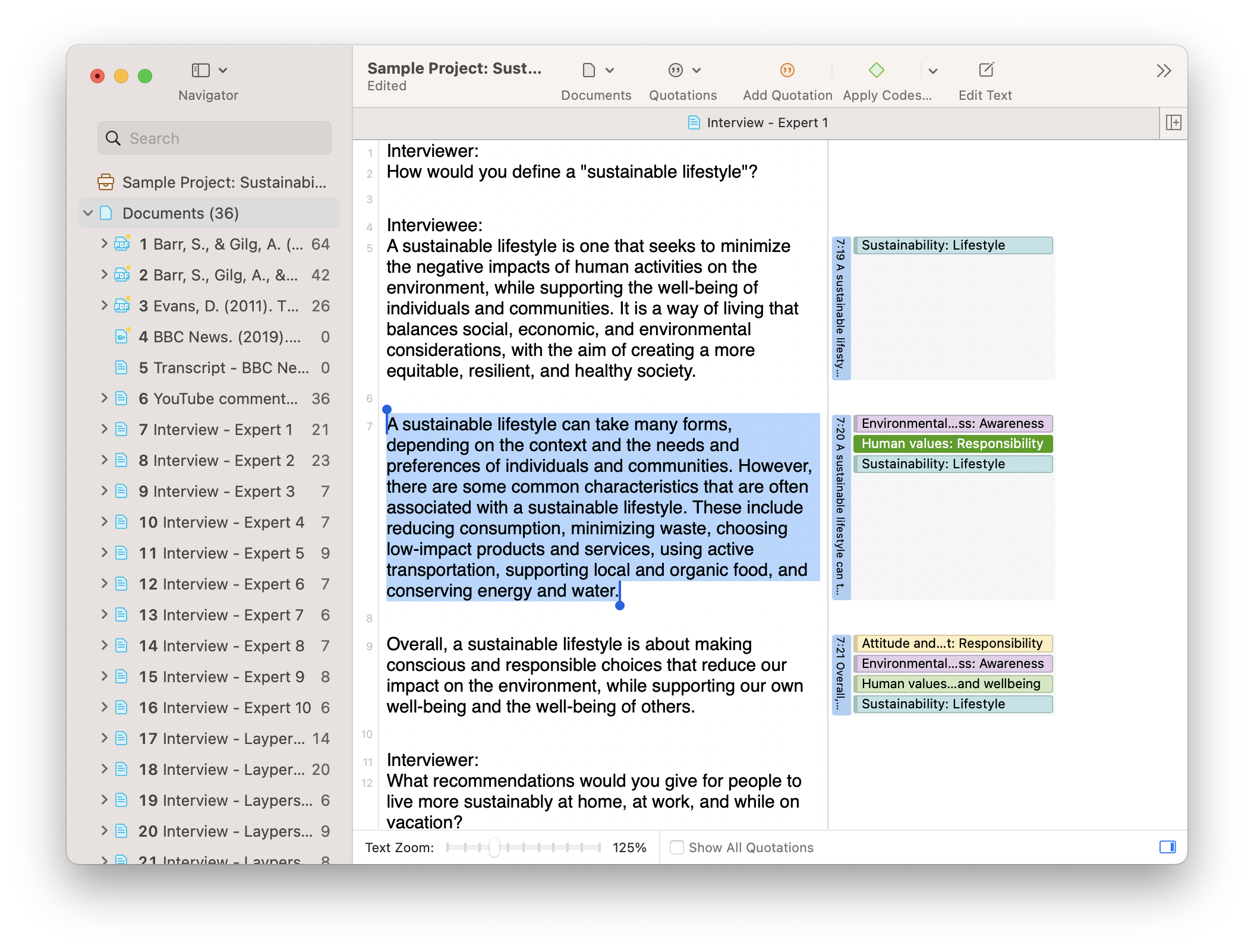
Later on, your codes can be organized into more formal categories or nested in hierarchies to contribute to a more robust thematic analysis.
Especially in qualitative research , discrete analytical approaches overlap with each other, meaning that a sufficiently thorough analysis of your data can eventually yield themes useful to your research. Let's examine a few of the more prominent approaches in qualitative research and their relation to thematic analysis.
Using grounded theory involves developing analysis iteratively through an inductive approach . While there is a great deal of overlap with thematic analysis approaches, grounded theory relies on incorporating more data to support the analysis in previous iterations of the research.
Nonetheless, the analytic process is largely the same for both approaches as they rely on seeking out phenomena that occur in abundance or distinct patterns. As you analyze qualitative data in either orientation, your main consideration is to observe which patterns emerge that can help contribute to a more universal understanding of the population or phenomenon under observation.
Narrative analysis
Understanding narratives is often less about taking large samples of data and more about unpacking the meaning that is produced in the data that is collected. In narrative research analysis , the data set is merely the narrative to be examined for its meaning, intent, and effect on its audience.
Searching for abundant or patterned themes is still a common objective when examining narratives. However, specific questions guide a narrative analysis , such as what the narrator is trying to say, how they say it, and how their audience receives the narrator's message.
Analyzing discourse is similar to analyzing narratives in that there is an examination of the subtext informing the use of words in communication. Research questions under both of these approaches focus specifically on language and communication, while thematic analysis can apply to all forms of data.
The scope of analysis is also different among approaches. Thematic analysis seeks to identify patterns in abundance. In contrast, discourse analysis can look at individual instances in discursive practices to more fully understand why people use language in a particular way.
However, the data resulting from an analysis of discursive practices can also be examined thematically. Discursive patterns within culturally-defined groups and cultural practices can be determined with a thematic analysis when utterances or interactional turns and patterns among them can be identified.
Among all the approaches in this section, content analysis is arguably the most quantitative. Strictly speaking, the words or phrases that appear most often in a body of textual data can tell something useful about the data as a whole. For example, imagine how we feel when a public speaker says "um" or "uh" an excessive number of times compared to another speaker who doesn't use these utterances at all. In another case, what can we say about the confidence of a person who frequently writes, "I don't know, but..."?
Content analysis seeks to determine the frequencies of aspects of language to understand a body of data. Unlike discourse analysis, however, content analysis looks strictly at what is said or written, with analysis primarily stemming from a statistical understanding of the data.
Oftentimes, content analysis is deductive in that it might apply previous theory to new data, unlike thematic analysis, which is primarily inductive in nature. That said, the findings from a content analysis can be used to determine themes, particularly if your research question can be addressed by directly looking at the textual data.
For thematic analysis, software is especially useful for identifying themes within large data sets. After all, thematically analyzing data by hand can be time-consuming, and a researcher might miss nuanced data without software to help them look at all the data thoroughly.
Coding qualitative data
For qualitative researchers, the coding process is one of the key tools for structuring qualitative data to facilitate any data analysis . In ATLAS.ti, data is broken down into quotations or segments of data that can be reduced to a set of codes that can be analyzed later.
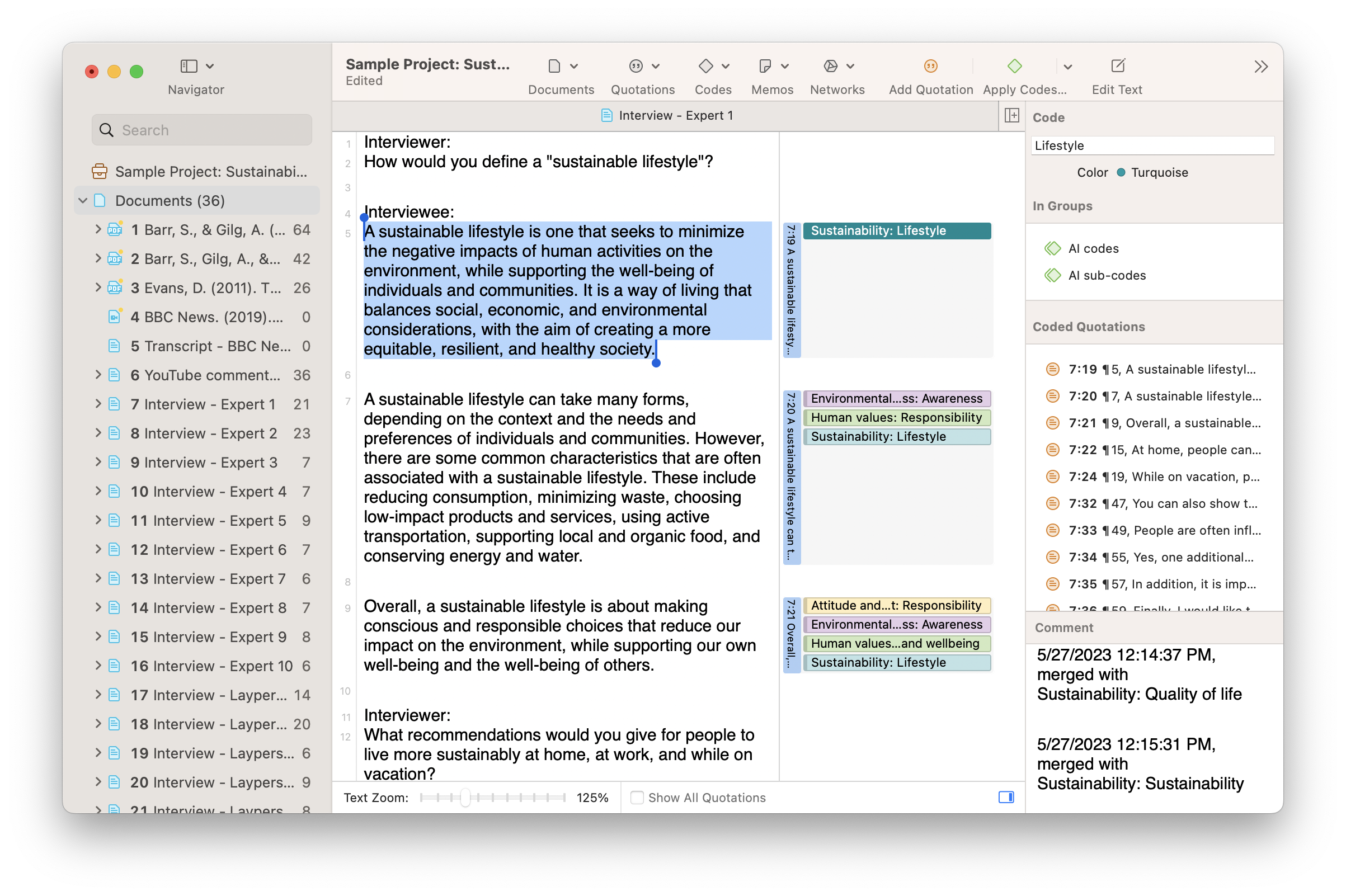
The codes and quotations appear in the margin next to a document in ATLAS.ti. This visualization is useful in showing how much of your data is coded and what concise meaning can be inferred from the data. In terms of thematic analysis, however, the codes can be assigned different colors based on what the researcher perceives as categories emerging from their project, as seen in the example above.
As you code the data iteratively, reviewing themes as they emerge, you can organize discrete codes within larger categories. ATLAS.ti provides spaces in your project called code groups and code categories where sets of codes in tandem represent broader, more theoretically developed themes. This approach to data organization , rather than merging codes together as broader units, allows for a more particular analysis of individual codes as your research questions evolve and develop over the course of your project.
ATLAS.ti tools for thematic analysis
As discussed above, analyzing qualitative data for themes can often be a matter of determining which codes and which categories of codes appear across the data and patterns among them. Indeed, any analysis software can assist you with this coding process for thematic analysis. The tools in ATLAS.ti, however, can help to make the process easier and more insightful. Let's look at a few of the many important features that are invaluable to conducting thematic analysis.
Code Manager
The Code Manager is ATLAS.ti's central space where researchers can organize and analyze their codes independent of the raw data . Researchers can perform numerous tasks in the Code Manager depending on their research questions and objectives, including looking just at the data that is associated with a particular code, organizing codes into hierarchies through code categories and nested sub-codes, and determining the frequencies and level of theoretical development for each code.
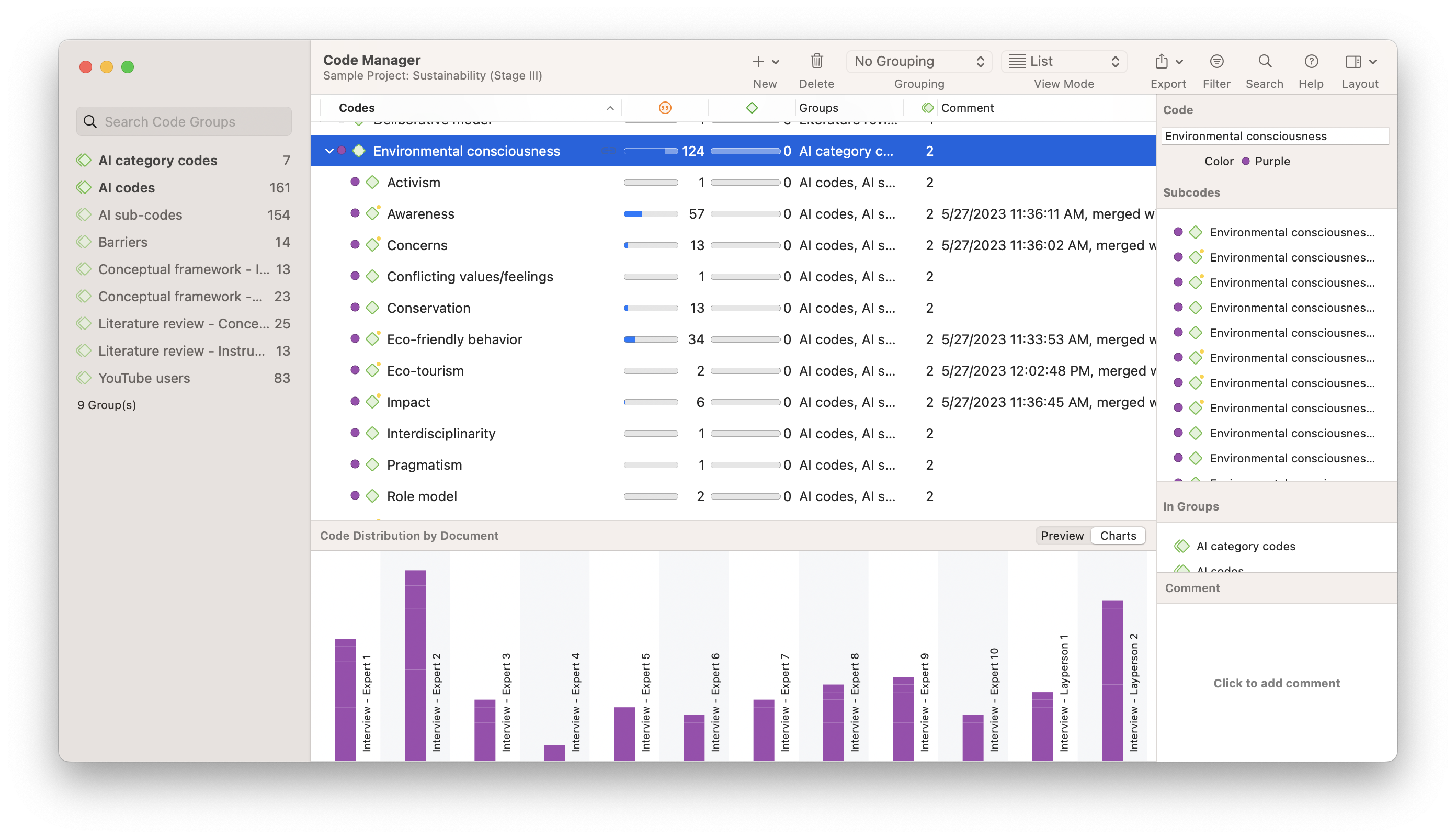
Co-Occurrence Analysis
Combinations of codes that overlap with each other can also illuminate themes in your data, perhaps more ably than discrete codes. This is different from understanding codes as groups, as an analysis for codes that frequently occur together in the data can give a sense of the relationships between different aspects of a phenomenon.
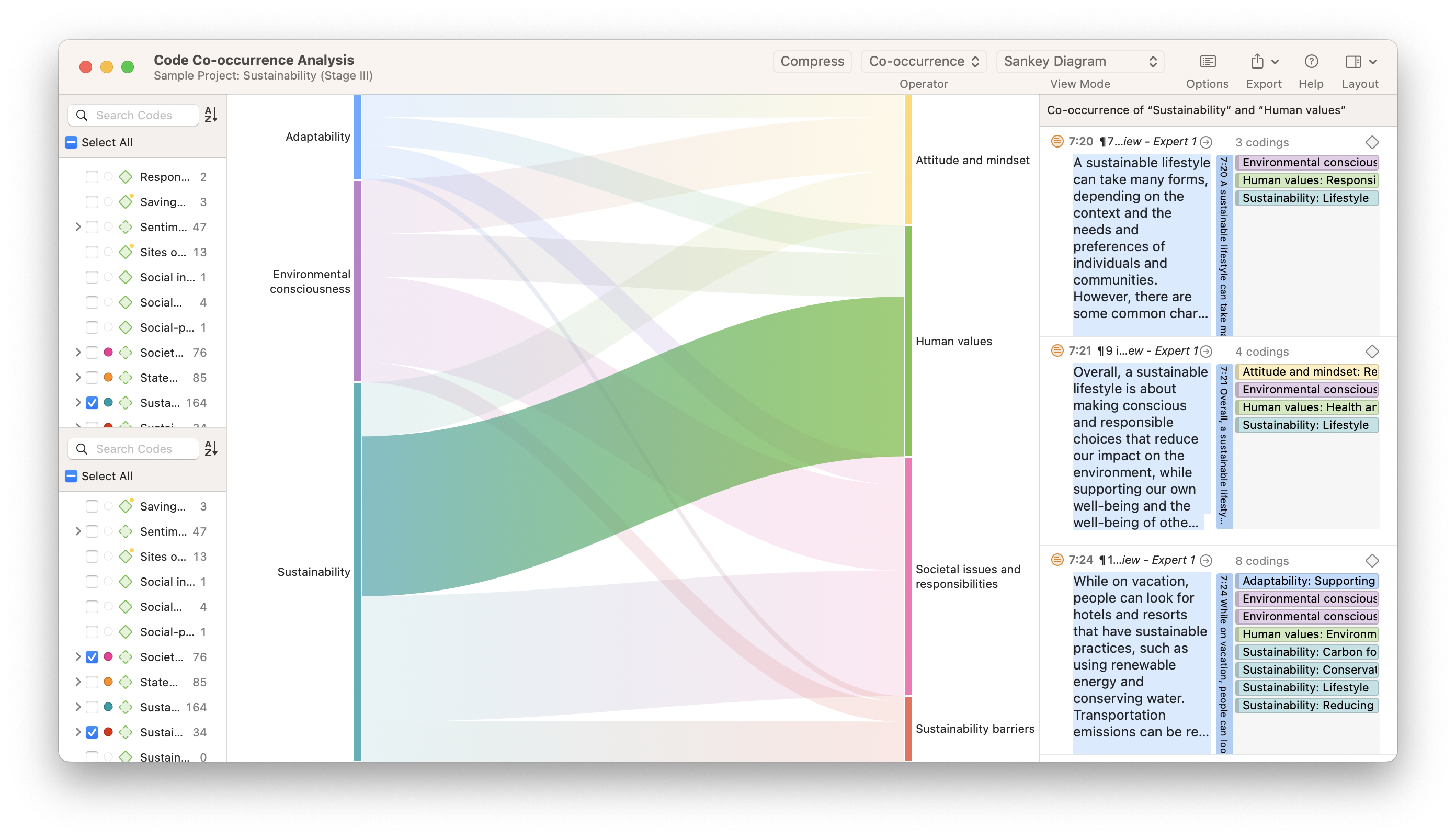
The Co-Occurrence Analysis tool helps researchers determine co-occurrence between different codes by placing them in a table, a bar chart, a Sankey diagram, or a force-directed graph. These visualizations can illustrate the strength of relationships between codes to you and your research audience. The relationships themselves can also be useful in generating themes useful for your analysis.
Word Frequencies
Qualitative content analysis depends on the frequencies of words, phrases, and other important aspects found in textual data. These frequencies can also help you in generating themes, particularly if your research questions are focused on the textual data itself.
The Word Frequencies tool in ATLAS.ti can facilitate a content analysis leading to a thematic analysis by giving you statistical data about what words appear most often in your project. Suppose these words can contribute to the development of themes. In that case, you can click on these words to find relevant quotations that you can code for thematic analysis. In addition, you can use ATLAS.ti’s Text Search tool to search for data segments that contain your word(s) of interest and automatically code them .

You can also use themes to refine the scope of the Word Frequencies tool. By default, Word Frequencies looks at documents, but the tool also allows researchers to filter the data by selecting the codes relevant to their query. That way, you can look at the most relevant data quotations that match your desired codes for a richer thematic analysis.
Patterns and themes may also emerge from combinations of codes, in which case the Query Tool can help you construct smart codes. Smart codes are more versatile than nested sub-codes or code groups as they allow you to set multiple criteria based on true/false conditions as well as proximity. For example, while a code group simply aggregates distinct codes together to show you quotations with any of the included codes, you can define a set of rules to filter the data and find the most relevant quotations for your thematic analysis.
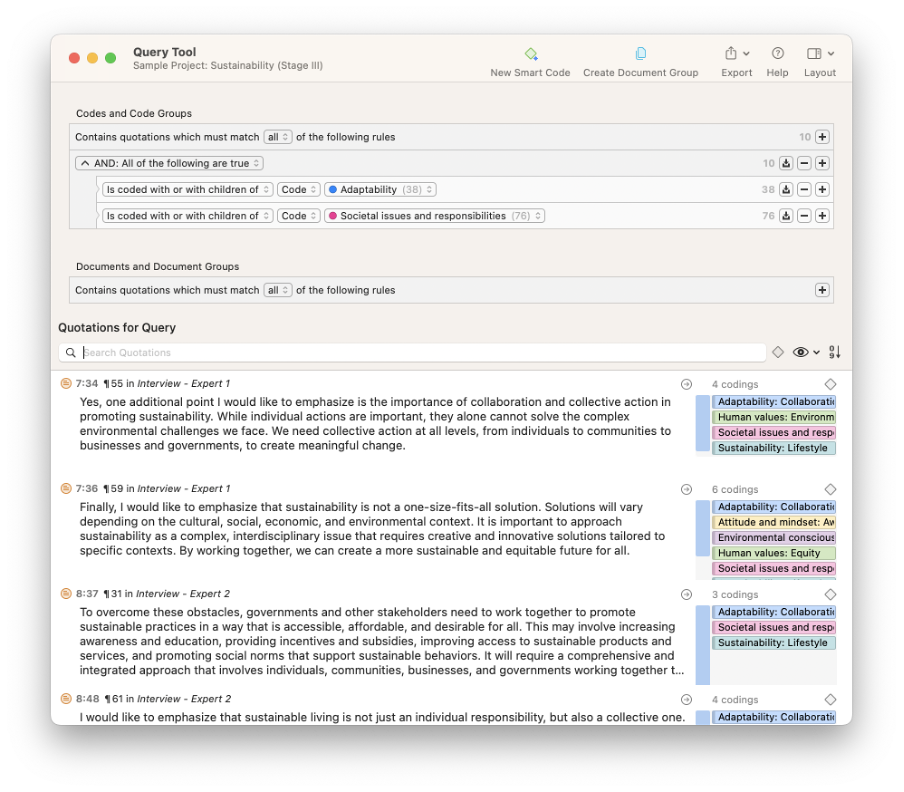
A systematic and rigorous approach to thematic analysis involves showing your research audience how you arrived at your codes and themes. In qualitative research , visualizations offer clarity about the data in your project, which is a critical skill when explaining the broader meaning derived from otherwise unstructured data .
A TreeMap of codes is a representation of the application of codes relative to each other. In other words, codes that have been applied the most often in your data occupy the largest portions of the TreeMap, while less frequently used codes appear smaller in your visualization. This can give you a sense of the prevalence of certain codes over other codes. Moreover, when you assign colors to codes along the lines of themes and categories, you can quickly get a visual understanding of the themes that appear most often in your project.
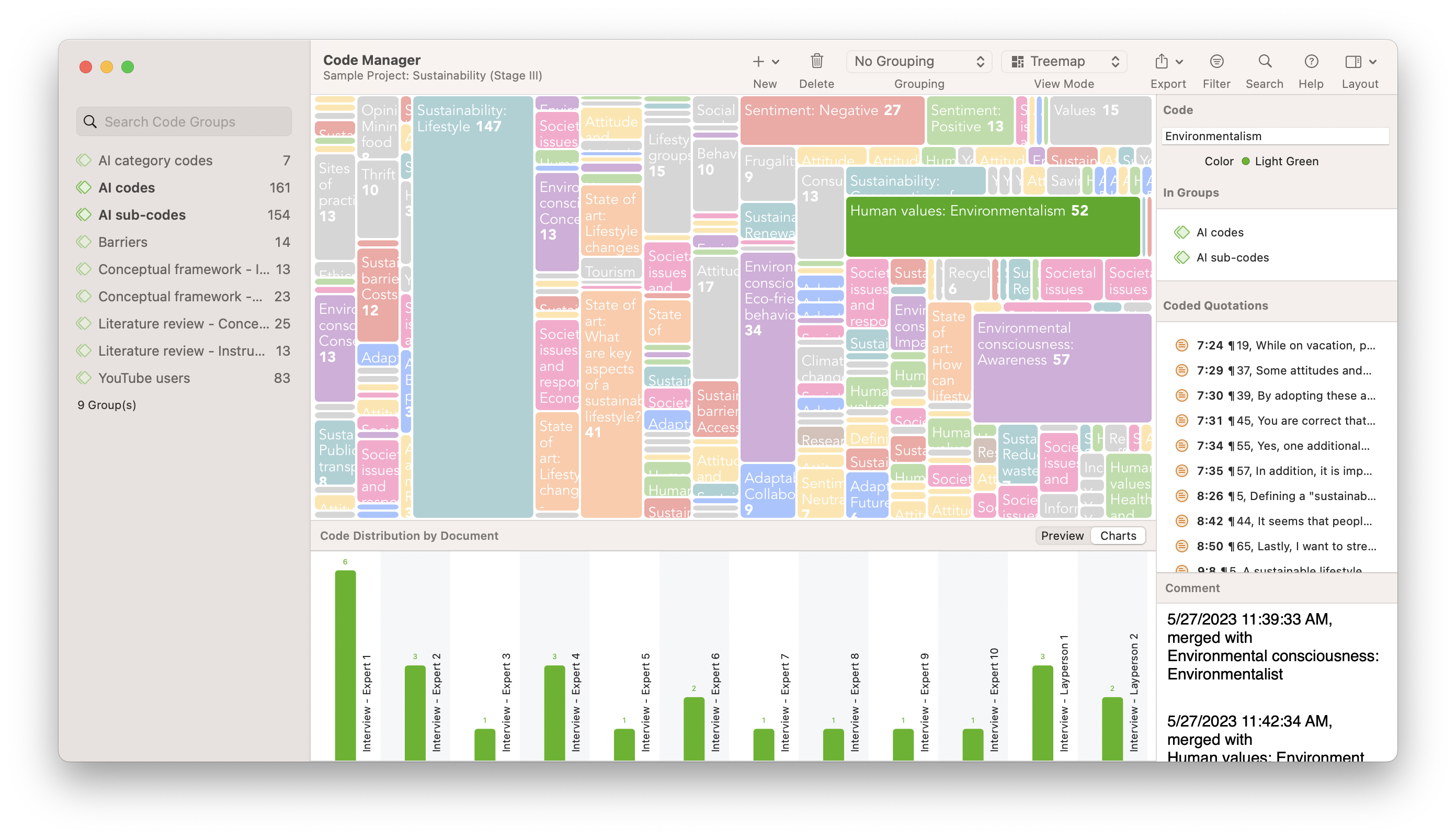
As a result, the TreeMap for codes can help provide a visual, thematic map that you can export as an image for use in explaining key themes in your research reports .
In qualitative research , thematic analysis is a useful means for generating a theoretical framework for qualitative concepts and phenomena. As always, though, theoretical development is best supported by thorough research. A theory that emerges from thematic analysis can be affirmed by additional inquiries, whether through a qualitative, quantitative , or mixed methods study .
Further research is always recommended for qualitative research, such as those that employ a thematic analysis, for the very reason that themes in qualitative concepts are socially constructed by the researcher. In turn, future research building on thematic analysis depends on a research design that is transparent and clearly defined so that other researchers can understand how the themes were generated in the first place. This requires a detailed accounting of the data and the analysis through comprehensive detail and visualizations in the final report.
To that end, ATLAS.ti's various tools are specifically designed to allow researchers to share and report their data to their research audiences through data reports and visualizations. Especially where qualitative research and thematic analysis are involved, researchers can benefit from transparently showing their analysis through data excerpts, visualizations , and descriptions of their methodology.
Analyze and visualize all your data in ATLAS.ti
Identify patterns and potential themes from your data with ATLAS.ti. Download a free trial today.
Ronald's Tower
Online classroom of Ronald Castillo y Maglaqui, Professor of Political Science at the University of Santo Tomas - Faculty of Arts and Letters. But for the time being, starting 2022, this blog serves as a student's public notebook of thoughts while he undertakes his international PhD in Asia Pacific Studies at National Chengchi University, Taipei, Taiwan. Reach him through [email protected]
Saturday, April 18, 2020
Qualitative treatment, no comments:, post a comment.
Start comment with your surname,first name.

- < Previous
Home > ACADEMIC_COMMUNITIES > Dissertations & Theses > 428
Antioch University Full-Text Dissertations & Theses
The experience of “cool”: a qualitative exploration.
Kristen Lauer , Antioch University, New England Follow
Kristen Lauer, Psy.D., is a 2018 graduate of the Psy.D. Program in Clinical Psychology at Antioch University, New England
Dissertation Committee:
- Theodore Ellenhorn, PhD, ABPP, Committee Chair
- James Sparrell, PhD, Committee Member
- Gina Pasquale, PsyD, Committee Member
cool, adolescence, phenomenological psychology, social constructionism
Document Type
Dissertation
Publication Date
This qualitative study explored the phenomenological experience of cool as retrospectively reported. I proposed cool as a phenomenological concept and advocate for the consideration of cool as relevant to clinical psychology through first, a literature review of related academic research and second, by identifying the information gap around cool as it intersects with clinical psychology. I utilized Interpretative Phenomenological Analysis (IPA) to inform analysis and exploration of participant narrative responses collected through an online survey. Participants consisted of 25 individuals between the ages of 18 and 25 who endorsed having experienced cool at some point in their life. In sharing the findings, I first highlighted the emergent themes of the experience of cool that were most common across participant responses: cool is a positive experience, cool exists in a social context, possession of positive attributes, and challenging adversity/oppression. I also described individual voices that deviated or provided alternate ideas to those found in the emergent themes: (a) difficult to describe, (b) physical appearance, (c) emotional defense, (d) social status/superiority, and (e) denial of cool. Participants also described what makes others cool which includes positive personal attributes, affect regulation and confidence, and apathy to cool. I follow the reporting of findings by acknowledging my active role as researcher in the process of the research. Exploration of the findings in the context of existing literature of cool brings to light the possibility that cool describes multiple unique concepts that are often conflated and confused: cool when a first-person experience, cool as an emotional/interpersonal defense, and cool as label placed on objects in a social setting. Ongoing conflation of these cools may lead clinicians and caregivers to misinterpret adolescents’ behaviors when seeking cool. Misinterpreting the cool may result in misguided responses from adults in authority positions to youth behaviors and ineffective interventions to support youth across their development.
Kristen Lauer
ORCID Scholar ID# 0000-0002-3402-3070
Recommended Citation
Lauer, K. (2018). The Experience of “Cool”: A Qualitative Exploration. https://aura.antioch.edu/etds/428
Since July 31, 2018
Included in
Clinical Psychology Commons
Antioch University Repository & Archive
Advanced Search
- Notify me via email or RSS
- Collections
- Disciplines
AURA provided by Antioch University Libraries
Home | About | FAQ | My Account | Accessibility Statement
Privacy Copyright
An official website of the United States government
The .gov means it’s official. Federal government websites often end in .gov or .mil. Before sharing sensitive information, make sure you’re on a federal government site.
The site is secure. The https:// ensures that you are connecting to the official website and that any information you provide is encrypted and transmitted securely.
- Publications
- Account settings
Preview improvements coming to the PMC website in October 2024. Learn More or Try it out now .
- Advanced Search
- Journal List
- Front Psychol
Color and psychological functioning: a review of theoretical and empirical work
In the past decade there has been increased interest in research on color and psychological functioning. Important advances have been made in theoretical work and empirical work, but there are also important weaknesses in both areas that must be addressed for the literature to continue to develop apace. In this article, I provide brief theoretical and empirical reviews of research in this area, in each instance beginning with a historical background and recent advancements, and proceeding to an evaluation focused on weaknesses that provide guidelines for future research. I conclude by reiterating that the literature on color and psychological functioning is at a nascent stage of development, and by recommending patience and prudence regarding conclusions about theory, findings, and real-world application.
The past decade has seen enhanced interest in research in the area of color and psychological functioning. Progress has been made on both theoretical and empirical fronts, but there are also weaknesses on both of these fronts that must be attended to for this research area to continue to make progress. In the following, I briefly review both advances and weaknesses in the literature on color and psychological functioning.
Theoretical Work
Background and recent developments.
Color has fascinated scholars for millennia ( Sloane, 1991 ; Gage, 1993 ). Theorizing on color and psychological functioning has been present since Goethe (1810) penned his Theory of Colors , in which he linked color categories (e.g., the “plus” colors of yellow, red–yellow, yellow–red) to emotional responding (e.g., warmth, excitement). Goldstein (1942) expanded on Goethe’s intuitions, positing that certain colors (e.g., red, yellow) produce systematic physiological reactions manifest in emotional experience (e.g., negative arousal), cognitive orientation (e.g., outward focus), and overt action (e.g., forceful behavior). Subsequent theorizing derived from Goldstein’s ideas has focused on wavelength, positing that longer wavelength colors feel arousing or warm, whereas shorter wavelength colors feel relaxing or cool ( Nakashian, 1964 ; Crowley, 1993 ). Other conceptual statements about color and psychological functioning have focused on general associations that people have to colors and their corresponding influence on downstream affect, cognition, and behavior (e.g., black is associated with aggression and elicits aggressive behavior; Frank and Gilovich, 1988 ; Soldat et al., 1997 ). Finally, much writing on color and psychological functioning has been completely atheoretical, focused exclusively on finding answers to applied questions (e.g., “What wall color facilitates worker alertness and productivity?”). The aforementioned theories and conceptual statements continue to motivate research on color and psychological functioning. However, several other promising theoretical frameworks have also emerged in the past decade, and I review these frameworks in the following.
Hill and Barton (2005) noted that in many non-human animals, including primate species, dominance in aggressive encounters (i.e., superior physical condition) is signaled by the bright red of oxygenated blood visible on highly vascularized bare skin. Artificial red (e.g., on leg bands) has likewise been shown to signal dominance in non-human animals, mimicking the natural physiological process ( Cuthill et al., 1997 ). In humans in aggressive encounters, a testosterone surge produces visible reddening on the face and fear leads to pallor ( Drummond and Quay, 2001 ; Levenson, 2003 ). Hill and Barton (2005) posited that the parallel between humans and non-humans present at the physiological level may extend to artificial stimuli, such that wearing red in sport contests may convey dominance and lead to a competitive advantage.
Other theorists have also utilized a comparative approach in positing links between skin coloration and the evaluation of conspecifics. Changizi et al. (2006) and Changizi (2009) contend that trichromatic vision evolved to enable primates, including humans, to detect subtle changes in blood flow beneath the skin that carry important information about the emotional state of the conspecific. Increased red can convey anger, embarrassment, or sexual arousal, whereas increased bluish or greenish tint can convey illness or poor physiological condition. Thus, visual sensitivity to these color modulations facilitates various forms of social interaction. In similar fashion, Stephen et al. (2009) and Stephen and McKeegan (2010) propose that perceivers use information about skin coloration (perhaps particularly from the face, Tan and Stephen, 2012 ) to make inferences about the attractiveness, health, and dominance of conspecifics. Redness (from blood oxygenization) and yellowness (from carotenoids) are both seen as facilitating positive judgments. Fink et al. (2006) and Fink and Matts (2007) posit that the homogeneity of skin coloration is an important factor in evaluating the age, attractiveness, and health of faces.
Elliot and Maier (2012) have proposed color-in-context theory, which draws on social learning, as well as biology. Some responses to color stimuli are presumed to be solely due to the repeated pairing of color and particular concepts, messages, and experiences. Others, however, are presumed to represent a biologically engrained predisposition that is reinforced and shaped by social learning. Through this social learning, color associations can be extended beyond natural bodily processes (e.g., blood flow modulations) to objects in close proximity to the body (e.g., clothes, accessories). Thus, for example, red may not only increase attractiveness evaluations when viewed on the face, but also when viewed on a shirt or dress. As implied by the name of the theory, the physical and psychological context in which color is perceived is thought to influence its meaning and, accordingly, responses to it. Thus, blue on a ribbon is positive (indicating first place), but blue on a piece of meat is negative (indicating rotten), and a red shirt may enhance the attractiveness of a potential mate (red = sex/romance), but not of a person evaluating one’s competence (red = failure/danger).
Meier and Robinson (2005) and Meier (in press ) have posited a conceptual metaphor theory of color. From this perspective, people talk and think about abstract concepts in concrete terms grounded in perceptual experience (i.e., they use metaphors) to help them understand and navigate their social world ( Lakoff and Johnson, 1999 ). Thus, anger entails reddening of the face, so anger is metaphorically described as “seeing red,” and positive emotions and experiences are often depicted in terms of lightness (rather than darkness), so lightness is metaphorically linked to good (“seeing the light”) rather than bad (“in the dark”). These metaphoric associations are presumed to have implications for important outcomes such as morality judgments (e.g., white things are viewed as pure) and stereotyping (e.g., dark faces are viewed more negatively).
For many years it has been known that light directly influences physiology and increases arousal (see Cajochen, 2007 , for a review), but recently theorists have posited that such effects are wavelength dependent. Blue light, in particular, is posited to activate the melanopsin photoreceptor system which, in turn, activates the brain structures involved in sub-cortical arousal and higher-order attentional processing ( Cajochen et al., 2005 ; Lockley et al., 2006 ). As such, exposure to blue light is expected to facilitate alertness and enhance performance on tasks requiring sustained attention.
Evaluation and Recommendations
Drawing on recent theorizing in evolutionary psychology, emotion science, retinal physiology, person perception, and social cognition, the aforementioned conceptualizations represent important advances to the literature on color and psychological functioning. Nevertheless, theory in this area remains at a nascent level of development, and the following weaknesses may be identified.
First, the focus of theoretical work in this area is either extremely specific or extremely general. A precise conceptual proposition such as red signals dominance and leads to competitive advantage in sports ( Hill and Barton, 2005 ) is valuable in that it can be directly translated into a clear, testable hypothesis; however, it is not clear how this specific hypothesis connects to a broader understanding of color–performance relations in achievement settings more generally. On the other end of the spectrum, a general conceptualization such as color-in-context theory ( Elliot and Maier, 2012 ) is valuable in that it offers several widely applicable premises; however, these premises are only vaguely suggestive of precise hypotheses in specific contexts. What is needed are mid-level theoretical frameworks that comprehensively, yet precisely explain and predict links between color and psychological functioning in specific contexts (for emerging developments, see Pazda and Greitemeyer, in press ; Spence, in press ; Stephen and Perrett, in press ).
Second, the extant theoretical work is limited in scope in terms of range of hues, range of color properties, and direction of influence. Most theorizing has focused on one hue, red, which is understandable given its prominence in nature, on the body, and in society ( Changizi, 2009 ; Elliot and Maier, 2014 ); however, other hues also carry important associations that undoubtedly have downstream effects (e.g., blue: Labrecque and Milne, 2012 ; green: Akers et al., 2012 ). Color has three basic properties: hue, lightness, and chroma ( Fairchild, 2013 ). Variation in any or all of these properties could influence downstream affect, cognition, or behavior, yet only hue is considered in most theorizing (most likely because experientially, it is the most salient color property). Lightness and chroma also undoubtedly have implications for psychological functioning (e.g., lightness: Kareklas et al., 2014 ; chroma: Lee et al., 2013 ); lightness has received some attention within conceptual metaphor theory ( Meier, in press ; see also Prado-León and Rosales-Cinco, 2011 ), but chroma has been almost entirely overlooked, as has the issue of combinations of hue, lightness, and chroma. Finally, most theorizing has focused on color as an independent variable rather than a dependent variable; however, it is also likely that many situational and intrapersonal factors influence color perception (e.g., situational: Bubl et al., 2009 ; intrapersonal: Fetterman et al., 2015 ).
Third, theorizing to date has focused primarily on main effects, with only a modicum of attention allocated to the important issue of moderation. As research literatures develop and mature, they progress from a sole focus on “is” questions (“Does X influence Y?”) to additionally considering “when” questions (“Under what conditions does X influence Y and under what conditions does X not influence Y?”). These “second generation” questions ( Zanna and Fazio, 1982 , p. 283) can seem less exciting and even deflating in that they posit boundary conditions that constrain the generalizability of an effect. Nevertheless, this step is invaluable in that it adds conceptual precision and clarity, and begins to address the issue of real-world applicability. All color effects undoubtedly depend on certain conditions – culture, gender, age, type of task, variant of color, etc. – and acquiring an understanding of these conditions will represent an important marker of maturity for this literature (for movement in this direction, see Schwarz and Singer, 2013 ; Tracy and Beall, 2014 ; Bertrams et al., 2015 ; Buechner et al., in press ; Young, in press ). Another, more succinct, way to state this third weakness is that theorizing in this area needs to take context, in all its forms, more seriously.
Empirical Work
Empirical work on color and psychological functioning dates back to the late 19th century ( Féré, 1887 ; see Pressey, 1921 , for a review). A consistent feature of this work, from its inception to the past decade, is that it has been fraught with major methodological problems that have precluded rigorous testing and clear interpretation ( O’Connor, 2011 ). One problem has been a failure to attend to rudimentary scientific procedures such as experimenter blindness to condition, identifying, and excluding color deficient participants, and standardizing the duration of color presentation or exposure. Another problem has been a failure to specify and control for color at the spectral level in manipulations. Without such specification, it is impossible to know what precise combination of color properties was investigated, and without such control, the confounding of focal and non-focal color properties is inevitable ( Whitfield and Wiltshire, 1990 ; Valdez and Mehrabian, 1994 ). Yet another problem has been the use of underpowered samples. This problem, shared across scientific disciplines ( Maxwell, 2004 ), can lead to Type I errors, Type II errors, and inflated effect sizes ( Fraley and Vazire, 2014 ; Murayama et al., 2014 ). Together, these methodological problems have greatly hampered progress in this area.
Although some of the aforementioned problems remain (see “Evaluation and Recommendations” below), others have been rectified in recent work. This, coupled with advances in theory development, has led to a surge in empirical activity. In the following, I review the diverse areas in which color work has been conducted in the past decade, and the findings that have emerged. Space considerations require me to constrain this review to a brief mention of central findings within each area. I focus on findings with humans (for reviews of research with non-human animals, see Higham and Winters, in press ; Setchell, in press ) that have been obtained in multiple (at least five) independent labs. Table Table1 1 provides a summary, as well as representative examples and specific references.
Research on color and psychological functioning.
In research on color and selective attention, red stimuli have been shown to receive an attentional advantage (see Folk, in press , for a review). Research on color and alertness has shown that blue light increases subjective alertness and performance on attention-based tasks (see Chellappa et al., 2011 , for a review). Studies on color and athletic performance have linked wearing red to better performance and perceived performance in sport competitions and tasks (see Maier et al., in press , for a review). In research on color and intellectual performance, viewing red prior to a challenging cognitive task has been shown to undermine performance (see Shi et al., 2015 , for a review). Research focused on color and aggressiveness/dominance evaluation has shown that viewing red on self or other increases appraisals of aggressiveness and dominance (see Krenn, 2014 , for a review). Empirical work on color and avoidance motivation has linked viewing red in achievement contexts to increased caution and avoidance (see Elliot and Maier, 2014 , for a review). In research on color and attraction, viewing red on or near a female has been shown to enhance attraction in heterosexual males (see Pazda and Greitemeyer, in press , for a review). Research on color and store/company evaluation has shown that blue on stores/logos increases quality and trustworthiness appraisals (see Labrecque and Milne, 2012 , for a review). Finally, empirical work on color and eating/drinking has shown that red influences food and beverage perception and consumption (see Spence, in press , for a review).
The aforementioned findings represent important contributions to the literature on color and psychological functioning, and highlight the multidisciplinary nature of research in this area. Nevertheless, much like the extant theoretical work, the extant empirical work remains at a nascent level of development, due, in part, to the following weaknesses.
First, although in some research in this area color properties are controlled for at the spectral level, in most research it (still) is not. Color control is typically done improperly at the device (rather than the spectral) level, is impossible to implement (e.g., in web-based platform studies), or is ignored altogether. Color control is admittedly difficult, as it requires technical equipment for color assessment and presentation, as well as the expertise to use it. Nevertheless, careful color control is essential if systematic scientific work is to be conducted in this area. Findings from uncontrolled research can be informative in initial explorations of color hypotheses, but such work is inherently fraught with interpretational ambiguity ( Whitfield and Wiltshire, 1990 ; Elliot and Maier, 2014 ) that must be subsequently addressed.
Second, color perception is not only a function of lightness, chroma, and hue, but also of factors such as viewing distance and angle, amount and type of ambient light, and presence of other colors in the immediate background and general environmental surround ( Hunt and Pointer, 2011 ; Brainard and Radonjić, 2014 ; Fairchild, 2015 ). In basic color science research (e.g., on color physics, color physiology, color appearance modeling, etcetera; see Gegenfurtner and Ennis, in press ; Johnson, in press ; Stockman and Brainard, in press ), these factors are carefully specified and controlled for in order to establish standardized participant viewing conditions. These factors have been largely ignored and allowed to vary in research on color and psychological functioning, with unknown consequences. An important next step for research in this area is to move to incorporate these more rigorous standardization procedures widely utilized by basic color scientists. With regard to both this and the aforementioned weakness, it should be acknowledged that exact and complete control is not actually possible in color research, given the multitude of factors that influence color perception ( Committee on Colorimetry of the Optical Society of America, 1953 ) and our current level of knowledge about and ability to control them ( Fairchild, 2015 ). As such, the standard that must be embraced and used as a guideline in this work is to control color properties and viewing conditions to the extent possible given current technology, and to keep up with advances in the field that will increasingly afford more precise and efficient color management.
Third, although in some research in this area, large, fully powered samples are used, much of the research remains underpowered. This is a problem in general, but it is particularly a problem when the initial demonstration of an effect is underpowered (e.g., Elliot and Niesta, 2008 ), because initial work is often used as a guide for determining sample size in subsequent work (both heuristically and via power analysis). Underpowered samples commonly produce overestimated effect size estimates ( Ioannidis, 2008 ), and basing subsequent sample sizes on such estimates simply perpetuates the problem. Small sample sizes can also lead researchers to prematurely conclude that a hypothesis is disconfirmed, overlooking a potentially important advance ( Murayama et al., 2014 ). Findings from small sampled studies should be considered preliminary; running large sampled studies with carefully controlled color stimuli is essential if a robust scientific literature is to be developed. Furthermore, as the “evidentiary value movement” ( Finkel et al., 2015 ) makes inroads in the empirical sciences, color scientists would do well to be at the leading edge of implementing such rigorous practices as publically archiving research materials and data, designating exploratory from confirmatory analyses, supplementing or even replacing significant testing with “new statistics” ( Cumming, 2014 ), and even preregistering research protocols and analyses (see Finkel et al., 2015 , for an overview).
In both reviewing advances in and identifying weaknesses of the literature on color and psychological functioning, it is important to bear in mind that the existing theoretical and empirical work is at an early stage of development. It is premature to offer any bold theoretical statements, definitive empirical pronouncements, or impassioned calls for application; rather, it is best to be patient and to humbly acknowledge that color psychology is a uniquely complex area of inquiry ( Kuehni, 2012 ; Fairchild, 2013 ) that is only beginning to come into its own. Findings from color research can be provocative and media friendly, and the public (and the field as well) can be tempted to reach conclusions before the science is fully in place. There is considerable promise in research on color and psychological functioning, but considerably more theoretical and empirical work needs to be done before the full extent of this promise can be discerned and, hopefully, fulfilled.
Conflict of Interest Statement
The author declares that the research was conducted in the absence of any commercial or financial relationships that could be construed as a potential conflict of interest.
- Aiken K. D., Pascal V. J. (2013). Seeing red, feeling red: how a change in field color influences perceptions. Int. J. Sport Soc. 3 107–120. [ Google Scholar ]
- Akers A., Barton J., Cossey R., Gainsford P., Griffin M., Micklewright D. (2012). Visual color perception in green exercise: positive effects of mood on perceived exertion. Environ. Sci. Technol. 46 8661–8666 10.1021/es301685g [ PubMed ] [ CrossRef ] [ Google Scholar ]
- Alberts W., van der Geest T. M. (2011). Color matters: color as trustworthiness cue in websites. Tech. Comm. 58 149–160. [ Google Scholar ]
- Barli Ö., Bilgili B., Dane Ş. (2006). Association of consumers’ sex and eyedness and lighting and wall color of a store with price attraction and perceived quality of goods and inside visual appeal. Percept. Motor Skill 103 447–450 10.2466/PMS.103.6.447-450 [ PubMed ] [ CrossRef ] [ Google Scholar ]
- Becker S. I., Valuch C., Ansorge U. (2014). Color priming in pop-out search depends on the relative color of the target. Front. Psychol. 5 : 289 10.3389/fpsyg.2014.00289 [ PMC free article ] [ PubMed ] [ CrossRef ] [ Google Scholar ]
- Bertrams A., Baumeister R. F., Englert C., Furley P. (2015). Ego depletion in color priming research: self-control strength moderates the detrimental effect of red on cognitive test performance. Pers. Soc. Psychol. B. 41 311–322 10.1177/0146167214564968 [ PubMed ] [ CrossRef ] [ Google Scholar ]
- Brainard D. H., Radonjić A. (2014). “Color constancy” in The New Visual Neurosciences , eds Werner J., Chalupa L. (Cambridge, MA; MIT Press; ), 545–556. [ Google Scholar ]
- Bruno N., Martani M., Corsini C., Oleari C. (2013). The effect of the color red on consuming food does not depend on achromatic (Michelson) contrast and extends to rubbing cream on the skin. Appetite 71 307–313 10.1016/j.appet.2013.08.012 [ PubMed ] [ CrossRef ] [ Google Scholar ]
- Bubl E., Kern E., Ebert D., Bach M., Tebartz van Elst L. (2009). Seeing gray when feeling blue? Depression can be measures in the eye of the diseased. Biol. Psychiat. 68 205–208 10.1016/j.biopsych.2010.02.009 [ PubMed ] [ CrossRef ] [ Google Scholar ]
- Buechner V. L., Maier M. A., Lichtenfeld S., Elliot A. J. Emotion expression and color: their joint influence on perceptions of male attractiveness and social position. Curr. Psychol . (in press) [ Google Scholar ]
- Buechner V. L., Maier M. A., Lichtenfeld S., Schwarz S. (2014). Red – take a closer look. PLoS ONE 9 : e108111 10.1371/journal.pone.0108111 [ PMC free article ] [ PubMed ] [ CrossRef ] [ Google Scholar ]
- Cajochen C. (2007). Alerting effects of light. Sleep Med. Rev . 11 453–464 10.1016/j.smrv.2007.07.009 [ PubMed ] [ CrossRef ] [ Google Scholar ]
- Cajochen C., Frey S., Anders D., Späti J., Bues M., Pross A., et al. (2011). Evening exposure to a light-emitting diodes (LED)-backlit computer screen affects circadian physiology and cognitive performance. J. Appl. Phsysoil. 110 1432–1438 10.1152/japplphysiol.00165.2011 [ PubMed ] [ CrossRef ] [ Google Scholar ]
- Cajochen C., Münch M., Kobialka S., Kräuchi K., Steiner R., Oelhafen P., et al. (2005). High sensitivity of human melatonin, alertness, thermoregulation, and heart rate to short wavelength light. J. Clin. Endocr. Metab. 90 1311–1316 10.1210/jc.2004-0957 [ PubMed ] [ CrossRef ] [ Google Scholar ]
- Caldwell D. F., Burger J. M. (2011). On thin ice: does uniform color really affect aggression in professional hockey? Soc. Psychol. Pers. Sci. 2 306–310 10.1177/1948550610389824 [ CrossRef ] [ Google Scholar ]
- Changizi M. (2009). The Vision Revolution . Dallas, TX: Benbella. [ Google Scholar ]
- Changizi M. A., Zhang Q., Shimojo S. (2006). Bare skin, blood and the evolution of primate colour vision. Biol. Lett. 2 217–221 10.1098/rsbl.2006.0440 [ PMC free article ] [ PubMed ] [ CrossRef ] [ Google Scholar ]
- Chebat J. C., Morrin M. (2007). Colors and cultures: exploring the effects of mall décor on consumer perceptions. J. Bus. Res. 60 189–196 10.1016/j.jbusres.2006.11.003 [ CrossRef ] [ Google Scholar ]
- Chellappa S. L., Steiner R., Blattner P., Oelhafen P., Götz T., Cajochen C. (2011). Non-visual effects of light on melatonin, alertness, and cognitive performance: can blue-enriched light keep us alert? PLoS ONE 26 : e16429 10.1371/journal.pone.0016429 [ PMC free article ] [ PubMed ] [ CrossRef ] [ Google Scholar ]
- Committee on Colorimetry of the Optical Society of America (1953). The Science of Color . Washington, DC: Optical Society of America. [ Google Scholar ]
- Crowley A. E. (1993). The two dimensional impact of color on shopping. Market. Lett. 4 59–69 10.1007/BF00994188 [ CrossRef ] [ Google Scholar ]
- Cumming G. (2014). The new statistics: why and how. Psychol. Sci. 25 7–29 10.1177/0956797613504966 [ PubMed ] [ CrossRef ] [ Google Scholar ]
- Cuthill I. C., Hunt S., Cleary C., Clark C. (1997). Color bands, dominance, and body mass regulation in male zebra finches ( Taeniopygia guttata ). Proc. R. Soc. Lond. B. Sci. 264 1093–1099 10.1098/rspb.1997.0151 [ CrossRef ] [ Google Scholar ]
- Drummond P. D., Quay S. H. (2001). The effect of expressing anger on cardiovascular reactivity and facial blood flow in Chinese and Caucasians. Psychophysiology 38 190–196 10.1111/1469-8986.3820190 [ PubMed ] [ CrossRef ] [ Google Scholar ]
- Elliot A. J., Maier M. A. (2012). Color-in-context theory. Adv. Exp. Soc. Psychol. 45 61–125 10.1016/B978-0-12-394286-9.00002-0 [ CrossRef ] [ Google Scholar ]
- Elliot A. J., Maier M. A. (2014). Color psychology: effects of perceiving color on psychological functioning in humans. Ann. Rev. Psychol. 65 95–120 10.1146/annurev-psych-010213-115035 [ PubMed ] [ CrossRef ] [ Google Scholar ]
- Elliot A. J., Maier M. A., Moller A. C., Friedman R., Meinhardt J. (2007). Color and psychological functioning: the effect of red on performance attainment. J. Exp. Psychol. Gen. 136 154–168 10.1037/0096-3445.136.1.154 [ PubMed ] [ CrossRef ] [ Google Scholar ]
- Elliot A. J., Niesta D. (2008). Romantic red: red enhances men’s attraction to women. J. Personal. Soc. Psychol. 95 1150–1164 10.1037/0022-3514.95.5.1150 [ PubMed ] [ CrossRef ] [ Google Scholar ]
- Elwood J. A., Bode J. (2014). Student preferences vis-à-vis teacher feedback in university EFL writing classes in Japan. System 42 333–343 10.1016/j.system.2013.12.023 [ CrossRef ] [ Google Scholar ]
- Fairchild M. D. (2013). Color Appearance Models, 3rd Edn New York, NY: Wiley Press; 10.1002/9781118653128 [ CrossRef ] [ Google Scholar ]
- Fairchild M. D. (2015). Seeing, adapting to, and reproducing the appearance of nature. Appl. Optics 54 B107–B116 10.1364/AO.54.00B107 [ PubMed ] [ CrossRef ] [ Google Scholar ]
- Feltman R., Elliot A. J. (2011). The influence of red on perceptions of dominance and threat in a competitive context. J. Sport Exerc. Psychol. 33 308–314. [ PubMed ] [ Google Scholar ]
- Fetterman A. K., Liu T., Robinson M. D. (2015). Extending color psychology to the personality realm: interpersonal hostility varied by red preferences and perceptual biases. J. Personal. 83 106–116 10.1111/jopy.12087 [ PMC free article ] [ PubMed ] [ CrossRef ] [ Google Scholar ]
- Féré C. (1887). Note sur les conditions physiologiques des émotions. Revue Phil. 24 561–581. [ Google Scholar ]
- Fink B., Grammer K., Matts P. J. (2006). Visible skin color distribution plays a role in the perception of age, attractiveness, and health in female faces. Evol. Hum. Behav. 27 433–442 10.1016/j.evolhumbehav.2006.08.007 [ CrossRef ] [ Google Scholar ]
- Fink B., Matts P. J. (2007). The effects of skin colour distribution and topography cues on the perception of female age and health. J. Eur. Acad. Derm. 22 493–498 10.1111/j.1468-3083.2007.02512.x [ PubMed ] [ CrossRef ] [ Google Scholar ]
- Finkel E. J., Eastwick P. W., Reis H. T. (2015). Best research practices in psychology: Illustrating epistemological and pragmatic considerations with the case of relationship science. J. Pers. Soc. Psychol. 108 275–297 10.1037/pspi0000007 [ PubMed ] [ CrossRef ] [ Google Scholar ]
- Folk C. L. (in press) “The role of color in the voluntary and involuntary guidance of selective attention,” in Handbook of Color Psychology , eds Elliot A., Fairchild M., Franklin A. (Cambridge: Cambridge University Press; ). [ Google Scholar ]
- Fraley R. C., Vazire S. (2014). The N-pact factor: evaluating the quality of empirical journals with respect to sample size and statistical power. PLoS ONE 9 : e109019 10.1371/journal.pone.0109019 [ PMC free article ] [ PubMed ] [ CrossRef ] [ Google Scholar ]
- Frank M. G., Gilovich T. (1988). The dark side of self and social perception: black uniforms and aggression in professional sports. J. Pers. Soc. Psychol. 54 74–85 10.1037/0022-3514.54.1.74 [ PubMed ] [ CrossRef ] [ Google Scholar ]
- Furley P., Dicks M., Memmert D. (2012). Nonverbal behavior in soccer: the influence of dominant and submissive body language on the impression formation and expectancy of success of soccer players. J. Sport Exerc. Psychol. 34 61–82. [ PubMed ] [ Google Scholar ]
- Gage J. (1993). Color and Culture: Practice and Meaning from Antiquity to Abstraction . Berkeley, CA: University of California Press. [ Google Scholar ]
- Garcia-Rubio M. A., Picazo-Tadeo A. J., González-Gómez F. (2011). Does a red shirt improve sporting performance? Evidence from Spanish football. Appl. Econ. Lett. 18 1001–1004 10.1080/13504851.2010.520666 [ CrossRef ] [ Google Scholar ]
- Gegenfurtner K. R., Ennis R. (in press) “Fundamentals of color vision II: higher order color processing,” in Handbook of Color Psychology , eds Elliot A., Fairchild M., Franklin A. (Cambridge: Cambridge University Press; ). [ Google Scholar ]
- Genschow O., Reutner L., Wänke M. (2012). The color red reduces snack food and soft Drink intake. Appetite 58 699–702 10.1016/j.appet.2011.12.023 [ PubMed ] [ CrossRef ] [ Google Scholar ]
- Gnambs T., Appel M., Batinic B. (2010). Color red in web-based knowledge testing. Comput. Hum. Behav. 26 1625–1631 10.1016/j.chb.2010.06.010 [ CrossRef ] [ Google Scholar ]
- Goethe W. (1810). Theory of Colors . London: Frank Cass. [ Google Scholar ]
- Goldstein K. (1942). Some experimental observations concerning the influence of colors on the function of the organism. Occup. Ther. Rehab. 21 147–151 10.1097/00002060-194206000-00002 [ CrossRef ] [ Google Scholar ]
- Greenlees I. A., Eynon M., Thelwell R. C. (2013). Color of soccer goalkeepers’ uniforms influences the outcomed of penalty kicks. Percept. Mot. Skill. 116 1–10 10.2466/30.24.PMS.117x14z6 [ PubMed ] [ CrossRef ] [ Google Scholar ]
- Greenlees I., Leyland A., Thelwell R., Filby W. (2008). Soccer penalty takers’ uniform color and pre-penalty kick gaze affect the impressions formed of them by opposing goalkeepers. J. Sport Sci. 26 569–576 10.1080/02640410701744446 [ PubMed ] [ CrossRef ] [ Google Scholar ]
- Guéguen N. (2012). Color and women attractiveness: when red clothed women are perceived to have more intense sexual intent. J. Soc. Psychol. 152 261–265 10.1080/00224545.2011.605398 [ PubMed ] [ CrossRef ] [ Google Scholar ]
- Guéguen N., Jacob C. (2014). Coffee cup color and evaluation of a beverage’s “warmth quality.” Color Res. Appl. 39 79–81 10.1002/col.21757 [ CrossRef ] [ Google Scholar ]
- Hagemann N., Strauss B., Leißing J. (2008). When the referee sees red. Psychol. Sci . 19 769–771 10.1111/j.1467-9280.2008.02155.x [ PubMed ] [ CrossRef ] [ Google Scholar ]
- Higham J. P., Winters S. (in press) “Color and mate choice in non-human animals,” in Handbook of Color Psychology, eds Elliot A., Fairchild M., Franklin A. (Cambridge: Cambridge University Press; ). [ Google Scholar ]
- Hill R. A., Barton R. A. (2005). Red enhances human performance in contests. Nature 435 293 10.1038/435293a [ PubMed ] [ CrossRef ] [ Google Scholar ]
- Hunt R. W. G., Pointer M. R. (2011). Measuring Colour , 4th Edn New York, NY: Wiley Press; 10.1002/9781119975595 [ CrossRef ] [ Google Scholar ]
- Ilie A., Ioan S., Zagrean L., Moldovan M. (2008). Better to be red than blue in virtual competition. Cyberpsychol. Behav. 11 375–377 10.1089/cpb.2007.0122 [ PubMed ] [ CrossRef ] [ Google Scholar ]
- Ioannidis J. P. A. (2008). Why most discovered true associations are inflated. Epidemiology 19 640–648 10.1097/EDE.0b013e31818131e7 [ PubMed ] [ CrossRef ] [ Google Scholar ]
- Johnson G. M. (in press) “Color appearance phenomena and visual illusions,” in Handbook of Color Psychology, eds Elliot A., Fairchild M., Franklin A. (Cambridge: Cambridge University Press; ). [ Google Scholar ]
- Kareklas I., Brunel F. F., Coulter R. A. (2014). Judgment is not color blind: the impact of automatic color preference on product advertising preferences. J. Consum. Psychol. 24 87–95 10.1016/j.jcps.2013.09.005 [ CrossRef ] [ Google Scholar ]
- Krenn B. (2014). The impact of uniform color on judging tackles in association football. Psychol. Sport Exerc. 15 222–225 10.1016/j.psychsport.2013.11.007 [ CrossRef ] [ Google Scholar ]
- Kuehni R. (2012). Color: An Introduction to Practice and Principles , 3rd Edn New York, NY: Wiley; 10.1002/9781118533567 [ CrossRef ] [ Google Scholar ]
- Labrecque L. L., Milne G. R. (2012). Exciting red and competent blue: the importance of color in marketing. J. Acad. Mark. Sci. 40 711–727 10.1007/s11747-010-0245-y [ CrossRef ] [ Google Scholar ]
- Lakoff G., Johnson M. (1999). Philosophy in the Flesh: The Embodied Mind and its Challenges to Western Thought . New York, NY: Basic Books. [ Google Scholar ]
- Lee S., Lee K., Lee S., Song J. (2013). Origins of human color preference for food. J. Food Eng. 119 508–515 10.1016/j.jfoodeng.2013.06.021 [ CrossRef ] [ Google Scholar ]
- Lee S., Rao V. S. (2010). Color and store choice in electronic commerce: the explanatory role of trust. J. Electr. Commer. Res. 11 110–126. [ Google Scholar ]
- Lehrl S., Gerstmeyer K., Jacob J. H., Frieling H., Henkel A. W., Meyrer R., et al. (2007). Blue light improves cognitive performance. J. Neural Trans. 114 457–460 10.1007/s00702-006-0621-4 [ PubMed ] [ CrossRef ] [ Google Scholar ]
- Levenson R. W. (2003). Blood, sweat, and fears: the automatic architecture of emotion. Ann. N. Y. Acad Sci. 1000 348–366 10.1196/annals.1280.016 [ PubMed ] [ CrossRef ] [ Google Scholar ]
- Lin H. (2014). Red-colored products enhance the attractiveness of women. Displays 35 202–205 10.1016/j.displa.2014.05.009 [ CrossRef ] [ Google Scholar ]
- Lindsay D. T., Brown A. M., Reijnen E., Rich A. N., Kuzmova Y. I., Wolfe J. M. (2010). Color channels, not color appearance of color categories, guide visual search for desaturated color targets. Psychol. Sci. 21 1208–1214 10.1177/0956797610379861 [ PMC free article ] [ PubMed ] [ CrossRef ] [ Google Scholar ]
- Little A. C., Hill R. A. (2007). Attribution to red suggests special role in dominance signaling. J. Evol. Psychol. 5 161–168 10.1556/JEP.2007.1008 [ CrossRef ] [ Google Scholar ]
- Lockley S. W., Evans E. E., Scheer F. A., Brainard G. C., Czeisler C. A., Aeschbach D. (2006). Short-wavelength sensitivity for the direct effects of light on alertness, vigilance, and the waking electroencephalogram in humans. Sleep 29 161–168. [ PubMed ] [ Google Scholar ]
- Lynn M., Giebelhausen M., Garcia S., Li Y., Patumanon I. Clothing color and tipping: an attempted replication and extension. J. Hosp. Tourism Res. doi: 10.1177/1096348013504001. (in press) [ CrossRef ] [ Google Scholar ]
- Maier M. A., Hill R., Elliot A. J., Barton R. A. (in press) “Color in achievement contexts in humans,” in Handbook of Color Psychology , eds Elliot A., Fairchild M., Franklin A. (Cambridge: Cambridge University Press; ). [ Google Scholar ]
- Maxwell S. (2004). The persistence of underpowered studies in psychological research: causes and consequences. Psychol. Methods 9 147–163 10.1037/1082-989X.9.2.147 [ PubMed ] [ CrossRef ] [ Google Scholar ]
- Mehta R., Zhu R. (2009). Blue or red? Exploring the effect of color on cognitive task performances. Science 323 1226–1229 10.1126/science.1169144 [ PubMed ] [ CrossRef ] [ Google Scholar ]
- Meier B. P. (in press) “Do metaphors color our perception of social life?,” in Handbook of Color sychology , eds Elliot A., Fairchild M., Franklin A. (Cambridge: Cambridge University Press; ). [ Google Scholar ]
- Meier B. P., Robinson M. D. (2005). The metaphorical representation of affect. Metaphor Symbol. 20 239–257 10.1207/s15327868ms2004_1 [ CrossRef ] [ Google Scholar ]
- Murayama K., Pekrun R., Fiedler K. (2014). Research practices that can prevent an inflation of false-positive rates. Personal. Soc. Psychol. Rev. 18 107–118 10.1177/1088868313496330 [ PubMed ] [ CrossRef ] [ Google Scholar ]
- Nakashian J. S. (1964). The effects of red and green surroundings on behavior. J. Gen. Psychol. 70 143–162 10.1080/00221309.1964.9920584 [ PubMed ] [ CrossRef ] [ Google Scholar ]
- O’Connor Z. (2011). Colour psychology and colour therapy: caveat emptor. Color Res. Appl. 36 229–334 10.1002/col.20597 [ CrossRef ] [ Google Scholar ]
- Pazda A. D., Greitemeyer T. (in press) “Color in romantic contexts in humans,” in Handbook of Color Psychology , eds Elliot A., Fairchild M., Franklin A. (Cambridge: Cambridge University Press; ). [ Google Scholar ]
- Piqueras-Fiszman B., Alcaide J., Roura E., Spence C. (2012). Is it the plate or is it the food? Assessing the influence of the color (black or white) and shape of the plate on the perception of food placed on it. Food Qual. Prefer. 24 205–208 10.1016/j.foodqual.2011.08.011 [ CrossRef ] [ Google Scholar ]
- Pomerleau V. J., Fortier-Gauthier U., Corriveau I., Dell’Acqua R., Jolicœur P. (2014). Colour-specific differences in attentional deployment for equiluminant pop-out colours: evidence from lateralized potentials. Int. J. Psychophysiol. 91 194–205 10.1016/j.ijpsycho.2013.10.016 [ PubMed ] [ CrossRef ] [ Google Scholar ]
- Prado-León L. R., Rosales-Cinco R. A. (2011). “Effects of lightness and saturation on color associations in the Mexican population,” in New Directions in Colour Studies , eds Biggam C., Hough C., Kay C., Simmons D. (Amsterdam, NL: John Benjamins Publishing Company; ), 389–394. [ Google Scholar ]
- Pressey S. L. (1921). The influence of color upon mental and motor efficiency. Am. J. Psychol. 32 327–356 10.2307/1413999 [ CrossRef ] [ Google Scholar ]
- Ridgway J., Myers B. (2014). A study on brand personality: consumers’ perceptions of colours used in fashion brand logos. Int. J. Fash. Des. Tech. Educ. 7 50–57 10.1080/17543266.2013.877987 [ CrossRef ] [ Google Scholar ]
- Roberts S. C., Owen R. C., Havlicek J. (2010). Distinguishing between perceiver and wearer effects in clothing color-associated attributions. Evol. Psychol. 8 350–364. [ PubMed ] [ Google Scholar ]
- Ross C. F., Bohlscheid J., Weller K. (2008). Influence of visual masking technique on the assessment of 2 red wines by trained consumer assessors. J. Food Sci. 73 S279–S285 10.1111/j.1750-3841.2008.00824.x [ PubMed ] [ CrossRef ] [ Google Scholar ]
- Rutchick A. M., Slepian M. L., Ferris B. D. (2010). The pen is mightier than the word: object priming of evaluative standards. Eur. J. Soc. Psychol. 40 704–708 10.1002/ejsp.753 [ CrossRef ] [ Google Scholar ]
- Sahin L., Figuerio M. G. (2013). Alerting effects of short-wavelength (blue) and long-wavelength (red) lights in the afternoon. Physiol. Behav. 116 1–7 10.1016/j.physbeh.2013.03.014 [ PubMed ] [ CrossRef ] [ Google Scholar ]
- Schwarz S., Singer M. (2013). Romantic red revisited: red enhances men’s attraction to young, but not menopausal women. J. Exp. Soc. Psychol. 49 161–164 10.1016/j.jesp.2012.08.004 [ CrossRef ] [ Google Scholar ]
- Setchell J. (in press) “Color in competition contexts in non-human animals,” in Handbook of Color Psychology , eds Elliot A., Fairchild M., Franklin A. (Cambridge: Cambridge University Press; ). [ Google Scholar ]
- Shi J., Zhang C., Jiang F. (2015). Does red undermine individuals’ intellectual performance? A test in China. Int. J. Psychol. 50 81–84 10.1002/ijop.12076 [ PubMed ] [ CrossRef ] [ Google Scholar ]
- Sloane P. (1991). Primary Sources, Selected Writings on Color from Aristotle to Albers . New York, NY: Design Press. [ Google Scholar ]
- Smajic A., Merritt S., Banister C., Blinebry A. (2014). The red effect, anxiety, and exam performance: a multistudy examination. Teach. Psychol. 41 37–43 10.1177/0098628313514176 [ CrossRef ] [ Google Scholar ]
- Sokolik K., Magee R. G., Ivory J. D. (2014). Red-hot and ice-cold ads: the influence of web ads’ warm and cool colors on click-through ways. J. Interact. Advert. 14 31–37 10.1080/15252019.2014.907757 [ CrossRef ] [ Google Scholar ]
- Soldat A. S., Sinclair R. C., Mark M. M. (1997). Color as an environmental processing cue: external affective cues can directly affect processing strategy without affecting mood. Soc. Cogn. 15 55–71 10.1521/soco.1997.15.1.55 [ CrossRef ] [ Google Scholar ]
- Sorokowski P., Szmajke A. (2007). How does the “red wins: effect work? The role of sportswear colour during sport competitions. Pol. J. Appl. Psychol. 5 71–79. [ Google Scholar ]
- Sorokowski P., Szmajke A., Hamamura T., Jiang F., Sorakowska A. (2014). “Red wins,” “black wins,” “blue loses” effects are in the eye of the beholder, but they are culturally niversal: a cross-cultural analysis of the influence of outfit colours on sports performance. Pol. Psychol. Bull. 45 318–325 10.2478/ppb-2014-0039 [ CrossRef ] [ Google Scholar ]
- Spence C. (in press) “Eating with our eyes,” in Handbook of Color Psychology , eds Elliot A., Fairchild M., Franklin A. (Cambridge: Cambridge University Press; ). [ Google Scholar ]
- Spence C., Velasco C., Knoeferle K. (2014). A large sampled study on the influence of the multisensory environment on the wine drinking experience. Flavour 3 8 10.1186/2044-7248-3-8 [ CrossRef ] [ Google Scholar ]
- Steele K. M. (2014). Failure to replicate the Mehta and Zhu (2009) color-priming effect on anagram solution times. Psychon. B. Rev. 21 771–776 10.3758/s13423-013-0548-3 [ PubMed ] [ CrossRef ] [ Google Scholar ]
- Stephen I. D., Law Smith M. J., Stirrat M. R., Perrett D. I. (2009). Facial skin coloration affects perceived health of human faces. Int. J. Primatol. 30 845–857 10.1007/s10764-009-9380-z [ PMC free article ] [ PubMed ] [ CrossRef ] [ Google Scholar ]
- Stephen I. D., McKeegan A. M. (2010). Lip colour affects perceived sex typicality and attractiveness of human faces. Perception 39 1104–1110 10.1068/p6730 [ PubMed ] [ CrossRef ] [ Google Scholar ]
- Stephen I. D., Oldham F. H., Perrett D. I., Barton R. A. (2012a). Redness enhances perceived aggression, dominance and attractiveness in men’s faces. Evol. Psychol. 10 562–572. [ PubMed ] [ Google Scholar ]
- Stephen I. D., Scott I. M. L., Coetzee V., Pound N., Perrett D. I., Penton-Voak I. S. (2012b). Cross-cultural effects of color, but not morphological masculinity, on perceived attractiveness of men’s faces. Evol. Hum. Behav. 33 260–267 10.1016/j.evolhumbehav.2011.10.003 [ CrossRef ] [ Google Scholar ]
- Stephen I. D., Perrett D. I. (in press) “Color and face perception,” in Handbook of Color Psychology , eds Elliot A., Fairchild M., Franklin A. (Cambridge: Cambridge University Press; ). [ Google Scholar ]
- Stockman A., Brainard D. H. (in press) “Fundamentals of color vision I: processing in the eye,” in Handbook of Color Psychology , eds Elliot A., Fairchild M., Franklin A. (Cambridge: Cambridge University Press; ). [ Google Scholar ]
- Taillard J., Capelli A., Sagaspe P., Anund A., Akerstadt T. (2012). In-car nocturnal blue light exposure improves motorway driving: a randomized controlled trial. PLoS ONE 7 : e46750 10.1371/journal.pone.0046750 [ PMC free article ] [ PubMed ] [ CrossRef ] [ Google Scholar ]
- Tan K. W., Stephen I. D. (2012). Colour detection thresholds in faces and colour patches. Perception 42 733–741 10.1068/p7499 [ PubMed ] [ CrossRef ] [ Google Scholar ]
- Tanaka A., Tokuno Y. (2011). The effect of the color red on avoidance motivation. Soc. Behav. Pers. 39 287–288 10.2224/sbp.2011.39.2.287 [ CrossRef ] [ Google Scholar ]
- Tchernikov I., Fallah M. (2010). A color hierarchy for automatic target selection. PLoS ONE 5 : e9338 10.1371/journal.pone.0009338 [ PMC free article ] [ PubMed ] [ CrossRef ] [ Google Scholar ]
- Thorstenson C. A. Functional equivalence of the color red and enacted avoidance behavior? Replication and empirical integration. Soc. Psychol. (in press) [ Google Scholar ]
- Tracy J. L., Beall A. T. (2014). The impact of weather on women’s tendency to wear red pink when at high risk for conception. PLoS ONE 9 : e88852 10.1371/journal.pone.0088852 [ PMC free article ] [ PubMed ] [ CrossRef ] [ Google Scholar ]
- Ten Velden F. S., Baas M., Shalvi S., Preenen P. T. Y., De Dreu C. K. W. (2012). In competitive interaction displays of red increase actors’ competitive approach and perceivers’ withdrawal. J. Exp. Soc. Psychol . 48 1205–1208 10.1016/j.jesp.2012.04.004 [ CrossRef ] [ Google Scholar ]
- Valdez P., Mehrabian A. (1994). Effects of color on emotions. J. Exp. Psychol. Gen. 123 394–409 10.1037/0096-3445.123.4.394 [ PubMed ] [ CrossRef ] [ Google Scholar ]
- Van Ittersum K., Wansink B. (2012). Plate size and color suggestability, The Deboeuf Illusion’s bias on serving and eating behavior. J. Consum. Res. 39 215–228 10.1086/662615 [ CrossRef ] [ Google Scholar ]
- Vandewalle G., Schmidt C., Albouy G., Sterpenich V., Darsaud A., Rauchs G., et al. (2007). Brain responses to violet, blue, and green monochromatic light exposures in humans: prominent role of blue light and the brainstem. PLoS ONE 11 : e1247 10.1371/journal.pone.0001247 [ PMC free article ] [ PubMed ] [ CrossRef ] [ Google Scholar ]
- Viola A. U., James L. M., Schlangen L. J. M., Dijk D. J. (2008). Blue-enriched white lightin the workplace improves self-reported alertness, performance and sleep quality. Scan. J. Work Environ. Health 34 297–306 10.5271/sjweh.1268 [ PubMed ] [ CrossRef ] [ Google Scholar ]
- Whitfield T. W., Wiltshire T. J. (1990). Color psychology: a critical review. Gen. Soc. Gen. Psychol. 116 385–411. [ PubMed ] [ Google Scholar ]
- Yamazaki A. K. (2010). An analysis of background-color effects on the scores of a computer-based English test. KES Part II LNI. 6277 630–636 10.1007/978-3-642-15390-7_65 [ CrossRef ] [ Google Scholar ]
- Young S. The effect of red on male perceptions of female attractiveness: moderationby baseline attractiveness of female faces. Eur. J. Soc. Psychol . (in press) [ Google Scholar ]
- Yüksel A. (2009). Exterior color and perceived retail crowding: effects on tourists’ shoppingquality inferences and approach behaviors. J. Qual. Assur. Hosp. Tourism 10 233–254 10.1080/15280080903183383 [ CrossRef ] [ Google Scholar ]
- Zanna M. P., Fazio R. H. (1982). “The attitude behavior relation: Moving toward a third generation of research,” in The Ontario Symposium , Vol. 2 eds Zanna M., Higgins E. T., Herman C. (Hillsdale, NJ: Lawrence Erlbaum Associates, Inc.), 283–301. [ Google Scholar ]
- Zhang T., Han B. (2014). Experience reverses the red effect among Chinese stockbrokers. PLoS ONE 9 : e89193 10.1371/journal.pone.0089193 [ PMC free article ] [ PubMed ] [ CrossRef ] [ Google Scholar ]
The Difference Between Hot, Warm and Cold Data
Apache Druid PMC Chair and Imply co-founder Gian Merlino classifies data into three different temperatures (Hot, Warm, and Cold).
See similar videos
Physical Hardware, Digital Analytics: IoT Challenges, Best Practices, and Solutions
Electric vehicle maker Rivian and German startup Thing-it were kind enough to talk us through how real-time data and analytics play a key part in the evolving landscape of IoT (Internet of Things). The wealth...
Analyzing streaming data with Apache Druid
Streaming data is not only data in motion—it’s a potential source of valuable insights, ready to be harvested and utilized. The challenge is to analyze streaming data at scale and extract these insights—before...
Real-Time Analytics in the Real World
Engineering teams increasingly have to deliver insights in real-time. But as they aim to reduce latency from event-to-insight, they also face the challenge of dealing with larger and more complex data and concurrent...

Let us help with your analytics apps
More Insights into the Role of Warm versus Cool Ambient Scents in Consumer Decision-making: An Abstract
- Conference paper
- First Online: 05 April 2022
- Cite this conference paper

- Marcel Lichters 3 ,
- Susanne Adler 4 &
- Marko Sarstedt 4
Part of the book series: Developments in Marketing Science: Proceedings of the Academy of Marketing Science ((DMSPAMS))
Included in the following conference series:
- Academy of Marketing Science Annual Conference
2263 Accesses
Ambient scents often have fascinating effects on consumer behavior. The perceived scent temperature can, for example, affect purchase behavior (Biswas and Szocs 2019). Consumer researchers have recently started explaining these effects by exploring the causal chains triggering consumers’ responses to ambient scents.
In this study, we extend prior research on ambient scent perceived temperature’s effects. We employed a between-subject design with a peppermint scent in a cool scent and a vanilla caramel scent in the warm scent condition ( n = 124). Participants answered—inter alia—questions on three dependent measures of premium product preferences (Madzharov et al. 2015), voting behavior in general elections, and relational perceptual focus (Ijzerman and Semin 2009). A pre-analysis’s results did not show differences in the two scents’ perceived properties, with the exception of temperature-related topics. The main analysis highlights the following:
First, we replicate prior research on warm vs. cool ambient scents’ effects on premium product preferences. Extending these results to a FMCG product, namely coffee-to-go brands, we show that consumers under warm (vs. cool) ambient scents have a higher preference for the status-related premium brand (Starbucks) over the non-premium brand (Tchibo). Following previous explanatory approaches, we attribute this behavior to a power restoration motivation that results from warmth triggering a higher social density perception and, subsequently, a feeling of reduced control over the environment.
Second, we broaden the research scope to general election behavior. We show that warm (vs. cool) ambient scents nudge consumers to vote more often for more extreme, right wing parties. Following our previous line of reasoning, right wing parties might address power restoration motivations, as they traditionally promise to reduce social environmental threats and uncertainties (Swyngedouw 2001).
Third, we replicate research on temperature’s effects on relational foci. We find that warm (vs. cool) ambient scents lead to a more global relational focus than a local property focus in Kimchi-Palmer tasks (Kimchi and Palmer 1982). We attribute this behavior to an increased attention to social relationships under warm temperatures.
We identify each of these effects regardless of whether we filter our sample for conscious or non-conscious scent processing. This suggests that these effects function without consumers’ conscious awareness. In summary, we strengthen and expand the previously established links between ambient scent temperature and premium product choice, expand research on temperature’s effects on relational foci, and provide the first evidence of a link between perceived ambient scent temperature and voting behavior.
This is a preview of subscription content, log in via an institution to check access.
Access this chapter
- Available as PDF
- Read on any device
- Instant download
- Own it forever
- Available as EPUB and PDF
- Compact, lightweight edition
- Dispatched in 3 to 5 business days
- Free shipping worldwide - see info
- Durable hardcover edition
Tax calculation will be finalised at checkout
Purchases are for personal use only
Institutional subscriptions
Author information
Authors and affiliations.
Chemnitz University of Technology, Chemnitz, Germany
Marcel Lichters
Otto-von-Guericke-University, Magdeburg, Germany
Susanne Adler & Marko Sarstedt
You can also search for this author in PubMed Google Scholar
Corresponding author
Correspondence to Marcel Lichters .
Editor information
Editors and affiliations.
IESEG School of Management, Paris, France
Felipe Pantoja
Rohrer College of Business, Rowan University, Glassboro, NJ, USA
Rights and permissions
Reprints and permissions
Copyright information
© 2022 The Author(s), under exclusive license to Springer Nature Switzerland AG
About this paper
Cite this paper.
Lichters, M., Adler, S., Sarstedt, M. (2022). More Insights into the Role of Warm versus Cool Ambient Scents in Consumer Decision-making: An Abstract. In: Pantoja, F., Wu, S. (eds) From Micro to Macro: Dealing with Uncertainties in the Global Marketplace. AMSAC 2020. Developments in Marketing Science: Proceedings of the Academy of Marketing Science. Springer, Cham. https://doi.org/10.1007/978-3-030-89883-0_26
Download citation
DOI : https://doi.org/10.1007/978-3-030-89883-0_26
Published : 05 April 2022
Publisher Name : Springer, Cham
Print ISBN : 978-3-030-89882-3
Online ISBN : 978-3-030-89883-0
eBook Packages : Business and Management Business and Management (R0)
Share this paper
Anyone you share the following link with will be able to read this content:
Sorry, a shareable link is not currently available for this article.
Provided by the Springer Nature SharedIt content-sharing initiative
- Publish with us
Policies and ethics
- Find a journal
- Track your research

Search form
You are here.

- The Importance of the Central Traits Warm and Cold

Although the averaging model is quite good at predicting final impressions, it is not perfect. This is because some traits are simply weighted more heavily than others. For one, negative information is more heavily weighted than is positive information (Rozin & Royzman, 2001). In addition to the heavy weight that we give to negative traits, we give a particular emphasis to the traits “warm” and “cold.” Imagine two men, Brad and Phil, who were described with these two sets of characteristics:
- Brad is industrious, critical, warm, practical, and determined.
- Phil is industrious, critical, cold, practical, and determined.
As you can see, the descriptions are identical except for the presence of “warm” and “cold.” In a classic study, Solomon Asch (1946) found that people described with these two sets of traits were perceived very differently—the “warm” person very positively and the “cold” person very negatively.
To test whether or not these differences would influence real behavior, Harold Kelley (1950) had students read about a professor who was described either as “rather cold” or as “very warm.” Then the professor came into the classroom and led a 20-minute discussion group with the students. Although the professor behaved in the same way for both groups, the students nevertheless reacted very differently to him. The students who were expecting the “warm” instructor were more likely to participate in the discussion, in comparison with those who were expecting him to be “cold.” And at the end of the discussion, the students also rated the professor who had been described as “warm” as being significantly more humorous, sociable, popular, and better natured than the “cold” professor. Moreover, the effects of warmth and coolness seem to be wired into our bodily responses. Research has found that even holding a cup of hot versus iced coffee, or making judgments in warm versus cold rooms leads people to judge others more positively (Ijzerman & Semin, 2009; Williams & Bargh, 2008).
In short, the particular dimension warm versus cold makes a big difference in how we perceive people—much bigger than do other traits. As a result, the traits of warm and cold are known as central traits , which are characteristic s that have a very strong influence on our impressions of others (Asch, 1946). The powerful influence of central traits is due to two things. One, they lead us to make inferences about other traits that might not have been mentioned. The students who heard that the professor was “warm” might also have assumed that he had other positive traits (maybe “nice” and “funny”), in comparison with those who heard that he was “cold.” Two, the important central traits also color our perceptions of the other traits that surround them. When a person is described as “warm” and “intelligent,” the meaning of “intelligent” seems a lot better than does the term “intelligent” in the context of a person who is also “cold.” Overall, the message is clear: if you want to get someone to like you, try to act in a warm manner toward them. Be friendly, nice, and interested in what they say. This attention you pay to the other will be more powerful than any other characteristics that you might try to display to them. The importance of perceptions of warmth-coldness has been confirmed in many other contexts. For example, in the field of psychotherapy, many studies have indicated that therapists’ warmth, empathy, and genuineness are the three most important traits in establishing a strong and trusting relationship with clients, which in turn leads to positive change (Shapiro, 1969).
- 15150 reads
- Authors & Informations
- About the Book
- The History of Social Psychology
- The Person and the Social Situation
- Evolutionary Adaptation and Human Characteristics
- Self-Concern
- Other-Concern
- Social Psychology in the Public Interest
- Social Influence Creates Social Norms
- Different Cultures Have Different Norms Key Takeaways Exercises and Critical Thinking
- Social Cognition: Thinking and Learning about Others
- Social Affect: Feelings about Ourselves and Others
- Social Behavior: Interacting with Others Key Takeaways Exercise and Critical Thinking
- The Importance of Scientific Research
- Measuring Affect, Behavior, and Cognition
- Social Neuroscience: Measuring Social Responses in the Brain
- Observational Research
- The Research Hypothesis
- Correlational Research
- Experimental Research
- Factorial Research Designs
- Deception in Social Psychology Experiments
- Interpreting Research Key Takeaways Exercises and Critical Thinking
- Chapter Summary
- Our Knowledge Accumulates as a Result of Learning
- Operant Learning
- Associational Learning Video
- Observational Learning Video
- Schemas as Social Knowledge
- How Schemas Develop: Accommodation and Assimilation
- How Schemas Maintain Themselves: The Power of Assimilation Research Focus: The Confirmation Bias Research Focus: Schemas as Energy Savers Key Takeaways Exercises and Critical Thinking
- Automatic versus Controlled Cognition Research Focus: Behavioral Effects of Priming
- Salience and Accessibility Determine Which Expectations We Use
- Cognitive Accessibility
- The False Consensus Bias Makes Us Think That Others Are More Like Us Than They Really Are
- Perceptions of What “Might Have Been” Lead to Counterfactual Thinking
- Anchoring and Adjustment Lead Us to Accept Ideas That We Should Revise
- Overconfidence
- The Importance of Cognitive Biases in Everyday Life
- Social Psychology in the Public Interest Key Takeaways Exercises and Critical Thinking
- Affect Influences Cognition
- The Power of Positive Cognition
- Cognition About Affect: The Case of Affective Forecasting Key Takeaways Exercises and Critical Thinking
- Thinking Like a Social Psychologist about Social Cognition
- Development and Characteristics of the Self-Concept
- Self-Complexity and Self-Concept Clarity
- Overestimating How Closely and Accurately Others View Us Key Takeaways Exercises and Critical Thinking
- Self-Esteem The Rosenberg Self-Esteem Scale
- Maintaining and Enhancing Self-Esteem Research Focus: Processing Information to Enhance the Self
- The Looking-Glass Self: Our Sense of Self is Influenced by Others’ Views of Us
- Social Comparison Theory: Our Sense of Self Is Influenced by Comparisons with Others Research Focus: Affiliation and Social Comparison
- Upward and Downward Comparisons Influence Our Self-Esteem
- Social Identity Theory: Our Sense of Self Is Influenced by the Groups We Belong To A Measure of Social Identity
- Self-Presentation: Our Sense of Self Is Influenced by the Audiences We Have Key Takeaways Exercises and Critical Thinking
- Thinking Like a Social Psychologist about the Self
- Attitudes Are Evaluations
- Some Attitudes Are Stronger Than Others
- When Do Our Attitudes Guide Our Behavior? Research Focus: Attitude-Behavior Consistency Key Takeaways Exercises and Critical Thinking
- Choosing Effective Communicators
- Creating Effective Communications
- Spontaneous Message Processing
- Thoughtful Message Processing
- Which Route Do We Take: Thoughtful or Spontaneous?
- Self-Perception Involves Inferring Our Beliefs from Our Behaviors Research Focus: Looking at Our Own Behavior to Determine Our Attitudes
- Creating Insufficient Justification and Overjustification
- The Experience of Cognitive Dissonance Can Create Attitude Change
- We Reduce Dissonance by Decreasing Dissonant or by Increasing Consonant Cognitions
- Cognitive Dissonance in Everyday Life
- Thinking Like a Social Psychologist about Attitudes, Behavior, and Persuasion
- Nonverbal Behavior
- Detecting Danger by Focusing on Negative Information Social Psychology in the Public Interest: Detecting Deception
- Judging People by Their Traits
- Combining Traits: Information Integration
- First Impressions Matter: The Primacy Effect Key Takeaways Exercises and Critical Thinking
- Making Inferences about Personality
- Detecting the Covariation between Personality and Behavior
- Attributions for Success and Failure Key Takeaways Exercises and Critical Thinking
- Are Our Attributions Accurate?
- The Fundamental Attribution Error
- The Actor-Observer Bias
- Self-Serving Biases
- Group-Serving Biases
- Victim-Blaming Biases Key Takeaways Exercises and Critical Thinking
- Perceiver Characteristics Research Focus: How Our Attributions Can Influence Our School Performance
- Attributional Styles and Mental Health Key Takeaways Exercises and Critical Thinking
- Thinking Like a Social Psychologist about Person Perception
- Informational Social Influence: Conforming to Be Accurate
- Normative Social Influence: Conforming to Be Liked and to Avoid Rejection
- Majority Influence: Conforming to the Group
- Minority Influence: Resisting Group Pressure
- The Size of the Majority
- The Unanimity of the Majority
- The Importance of the Task Research Focus: How Task Importance and Confidence Influence Conformity Key Takeaways Exercises and Critical Thinking
- Reward Power
- Coercive Power
- Legitimate Power
- Referent Power
- Expert Power Research Focus: Does Power Corrupt?
- Personality and Leadership
- Leadership as an Interaction between the Person and the Situation Key Takeaways Exercises and Critical Thinking
- Person Differences
- Gender Differences
- Cultural Differences
- Psychological Reactance Key Takeaways Exercise and Critical Thinking
- Thinking Like a Social Psychologist about Social Influence
- Physical Attractiveness
- Why Is Physical Attractiveness So Important?
- Why Does Similarity Matter?
- Status Similarity
- Affect and Attraction Research Focus: Arousal and Attraction Key Takeaways Exercises and Critical Thinking
- Closeness and Intimacy
- Communal and Exchange Relationships
- Interdependence and Commitment
- What Is Love? Research Focus: Romantic Love Reduces Our Attention to Attractive Others
- Making Relationships Last
- When Relationships End Key Takeaways Exercises and Critical Thinking
- Thinking Like a Social Psychologist about Liking and Loving
- Reciprocity and Social Exchange
- Social Reinforcement and Altruism: The Role of Rewards and Costs
- Social Norms for Helping Research Focus: Moral Hypocrisy Key Takeaways Exercises and Critical Thinking
- Positive Moods Increase Helping
- Relieving Negative Emotions: Guilt Increases Helping
- Personal Distress and Empathy as Determinants of Helping Research Focus: Personal Distress versus Empathy as Determinants of Helping Key Takeaways Exercises and Critical Thinking
- Latané and Darley’s Model of Helping
- Interpreting
- Taking Responsibility
- Implementing Action Key Takeaways Exercises and Critical Thinking
- Some People Are More Helpful Than Others: The Altruistic Personality
- Who Do We Help? Attributions and Helping
- Reactions to Receiving Help
- Cultural Issues in Helping
- Increasing Helping Key Takeaways Exercises and Critical Thinking
- Thinking Like a Social Psychologist about Altruism
- Is Aggression Evolutionarily Adaptive?
- The Role of Biology in Aggression
- Hormones Influence Aggression: Testosterone and Serotonin
- Drinking Alcohol Increases Aggression
- Negative Emotions Cause Aggression Research Focus: The Effects of Provocation and Fear of Death on Aggression
- Can We Reduce Negative Emotions by Engaging in Aggressive Behavior? Key Takeaways Exercises and Critical Thinking
- Social Learning and Modeling: Is Aggression Learned?
- Violence Creates More Violence: Television, Video Games, and Handguns Research Focus: The Effects of Violent Video Games on Aggression
- Why Does Viewing Violence Lead to Aggression? Key Takeaways Exercises and Critical Thinking
- Individual Differences in Aggression
- Gender Differences in Aggression
- Thinking Like a Social Psychologist about Aggression
- Communication, Interdependence, and Group Structure
- Social Identity
- The Stages of Group Development Key Takeaways Exercises and Critical Thinking
- Social Facilitation and Social Inhibition
- Person Variables: Group Member Characteristics
- The Importance of the Social Situation: Task Characteristics
- Social Loafing Research Focus: Differentiating Coordination Losses from Social Loafing Key Takeaways Exercises and Critical Thinking
- Process Gains in Group versus Individual Decision Making
- Process Losses Due to Group Conformity Pressures: Groupthink
- Cognitive Process Losses: Lack of Information Sharing Research Focus: Poor Information Sharing in Groups
- Cognitive Process Losses: Ineffective Brainstorming
- Motivating Groups to Perform Better by Appealing to Self-Interest
- Cognitive Approaches: Improving Communication and Information Sharing
- Setting Appropriate Goals
- Group Member Diversity: Costs and Benefits Key Takeaways Exercises and Critical Thinking
- Thinking Like a Social Psychologist about Social Groups
- Spontaneous Social Categorization
- The Benefits of Social Categorization
- Liking “Us” More Than “Them”: Ingroup Favoritism
- The Outcomes of Ingroup Favoritism
- Ingroup Favoritism Has Many Causes
- When Ingroup Favoritism Does Not Occur
- Personality and Cultural Determinants of Ingroup Favoritism Key Takeaways Exercises and Critical Thinking
- Reducing Discrimination by Changing Social Norms
- Reducing Prejudice through Intergroup Contact Research Focus: The Extended-Contact Hypothesis
- Moving Others Closer to Us: The Benefits of Recategorization Key Takeaways Exercises and Critical Thinking
- Thinking Like a Social Psychologist about Stereotyping, Prejudice, and Discrimination
- Competition and Conflict
- Social Fairness
- How the Social Situation Creates Conflict: The Role of Social Dilemmas Learning Objectives
- Characteristics of the Prisoner’s Dilemma
- Variations on the Prisoner’s Dilemma
- Resource Dilemma Games Research Focus: The Trucking Game
- Who Cooperates and Who Competes? Research Focus: Self- and Other-Orientations in Social Dilemmas
- Gender and Cultural Differences in Cooperation and Competition Key Takeaways Exercises and Critical Thinking
- Task Characteristics and Perceptions
- Privatization
- The Important Role of Communication
- The Tit-for-Tat Strategy
- Formal Solutions to Conflict: Negotiation, Mediation, and Arbitration Key Takeaways Exercise and Critical Thinking
- Thinking Like a Social Psychologist about Cooperation and Competition
- Back Matter
This action cannot be undo.
Choose a delete action Empty this page Remove this page and its subpages
Content is out of sync. You must reload the page to continue.
New page type Book Topic Interactive Learning Content
- Config Page
- Add Page Before
- Add Page After
- Delete Page

- Reviews / Why join our community?
- For companies
- Frequently asked questions
Color Theory
What is color theory.
Color theory is the study of how colors work together and how they affect our emotions and perceptions. It's like a toolbox for artists, designers, and creators to help them choose the right colors for their projects. Color theory enables you to pick colors that go well together and convey the right mood or message in your work.
- Transcript loading…
Color is in the Beholders’ Eyes
“Color! What a deep and mysterious language, the language of dreams.” — Paul Gauguin, Famous post-Impressionist painter
Sir Isaac Newton established color theory when he invented the color wheel in 1666. Newton understood colors as human perceptions —not absolute qualities—of wavelengths of light . By systematically categorizing colors, he defined three groups:
Primary (red, blue, yellow).
Secondary (mixes of primary colors).
Tertiary (or intermediate —mixes of primary and secondary colors).
What Are Hue, Value and Saturation?
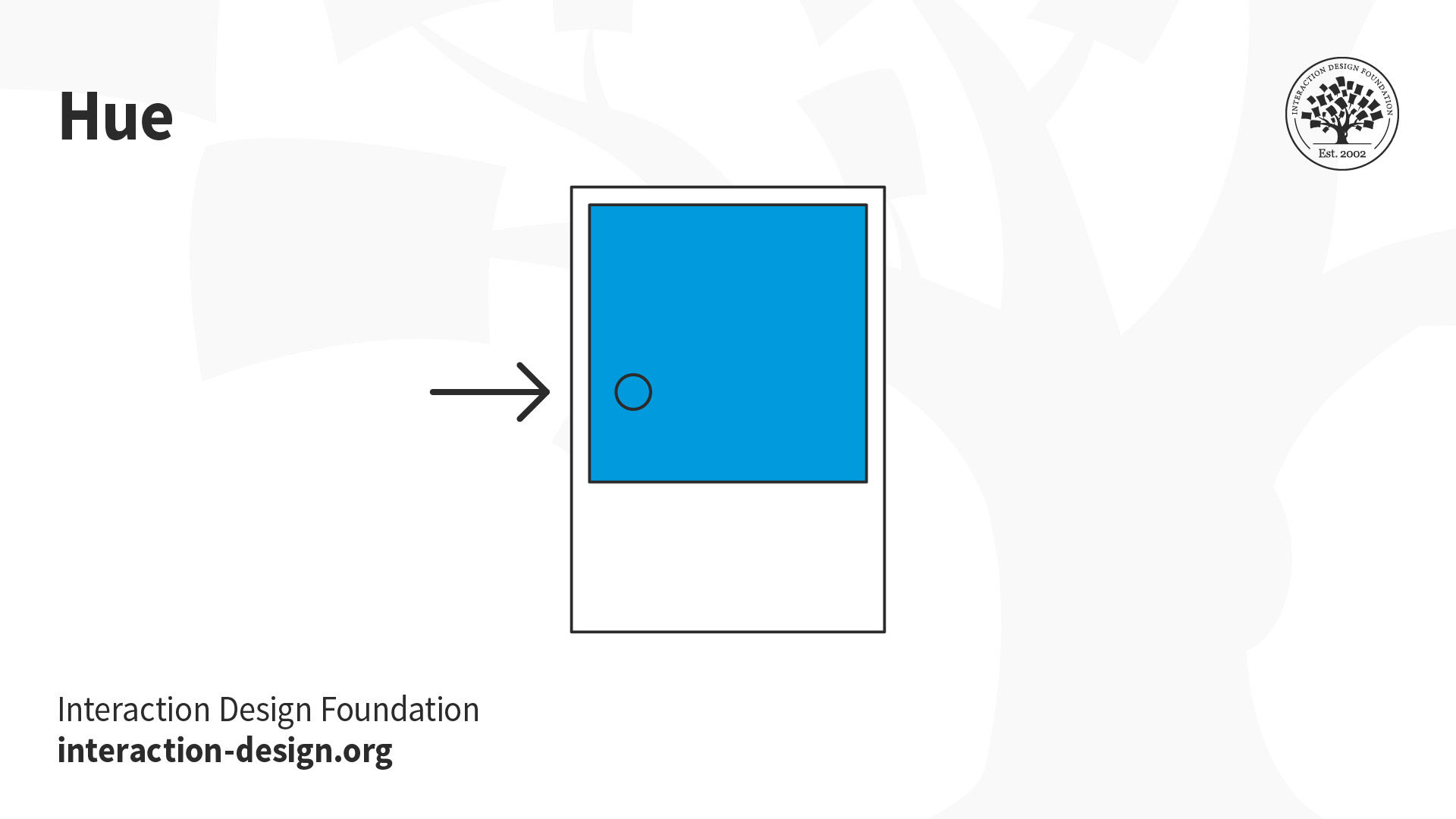
© Interaction Design Foundation, CC BY-SA 4.0
Hue is the attribute of color that distinguishes it as red, blue, green or any other specific color on the color wheel.
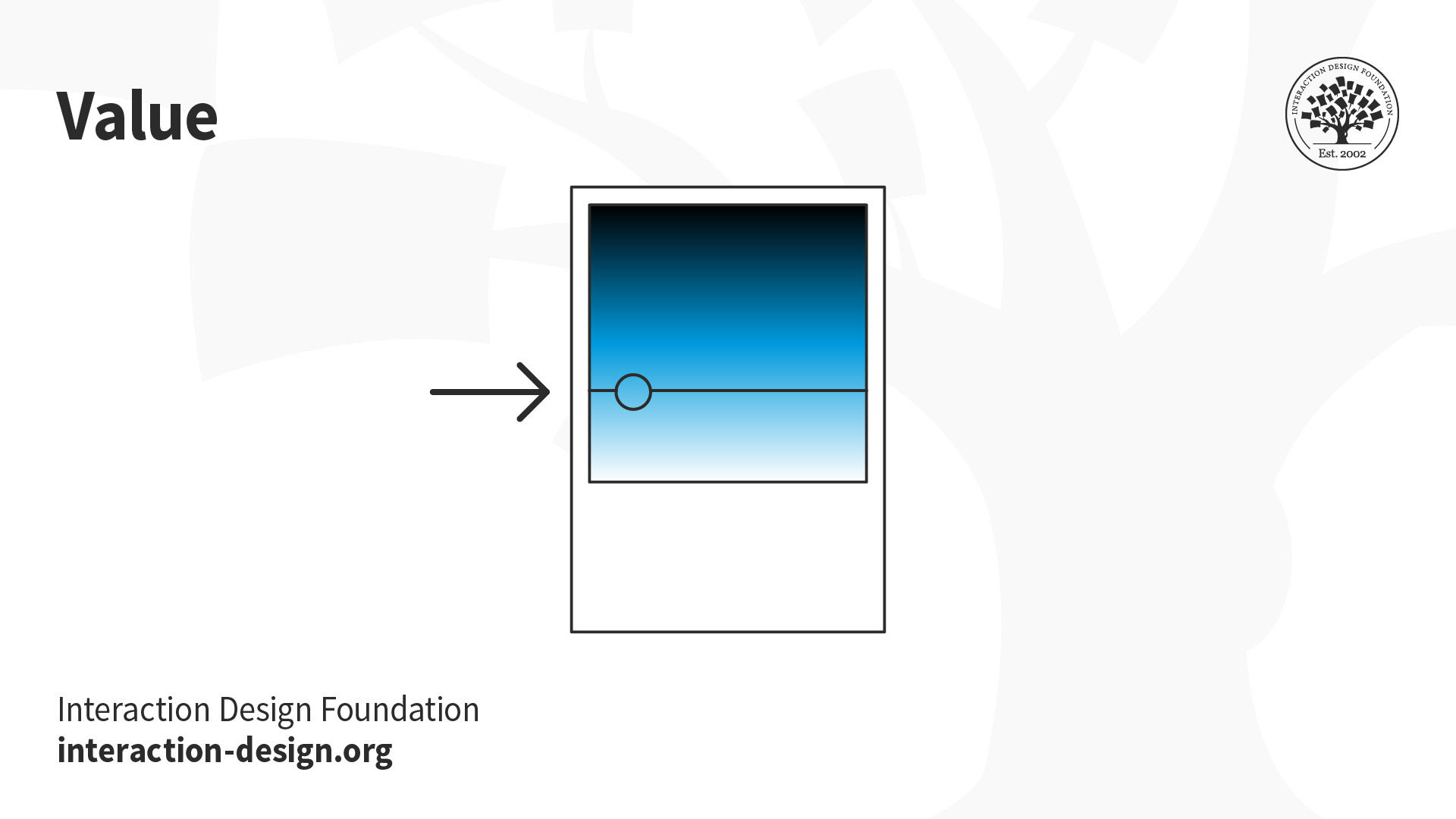
Value represents a color's relative lightness or darkness or grayscale and it’s crucial for creating contrast and depth in visual art.
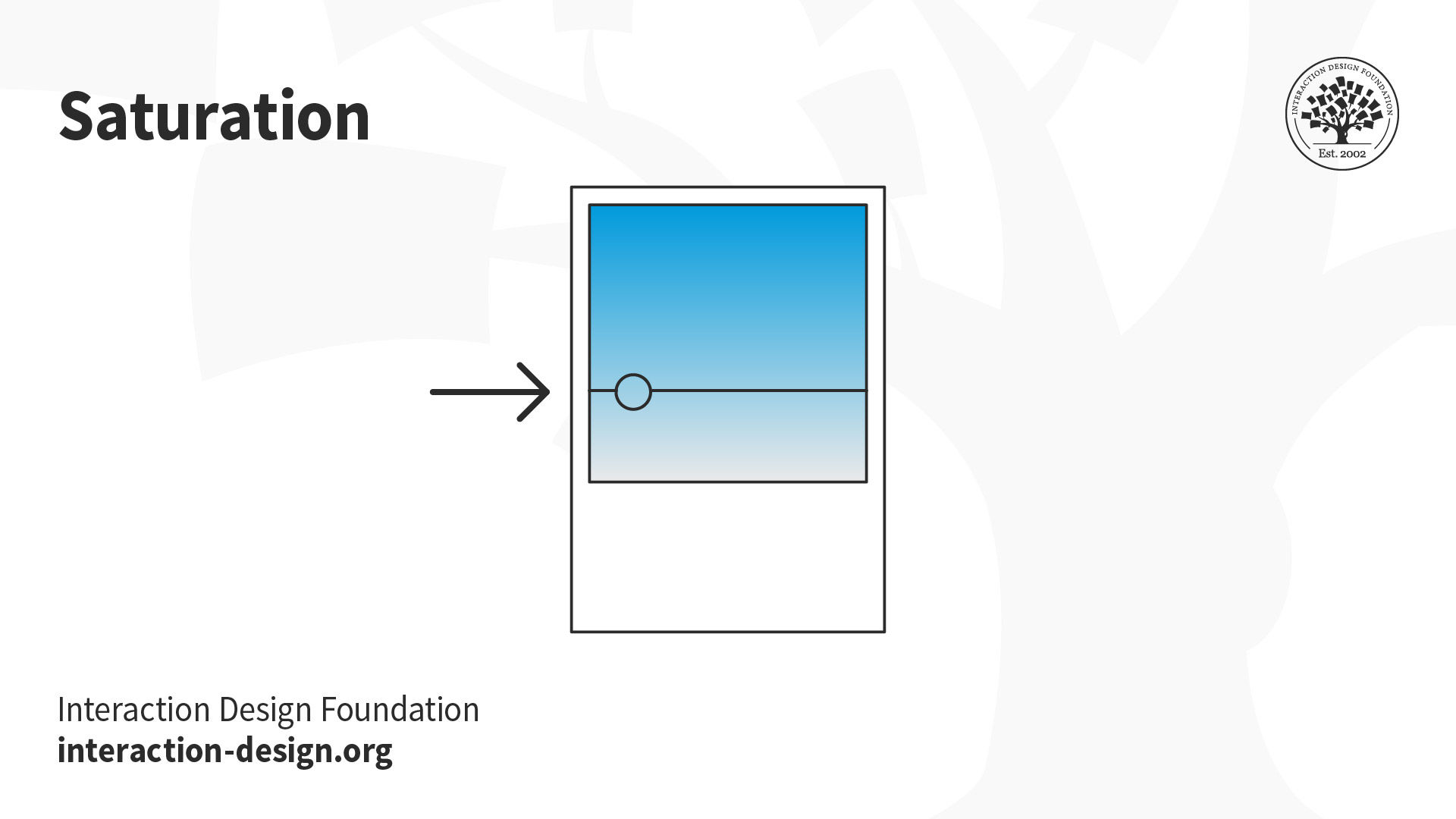
Saturation , also known as chroma or intensity, refers to the purity and vividness of a color, ranging from fully saturated (vibrant) to desaturated (grayed).
In user experience (UX) design , you need a firm grasp of color theory to craft harmonious, meaningful designs for your users.
Use a Color Scheme and Color Temperature for Design Harmony
In screen design, designers use the additive color model , where red, green and blue are the primary colors. Just as you need to place images and other elements in visual design strategically, your color choices should optimize your users’ experience in attractive interfaces with high usability . When starting your design process, you can consider using any of these main color schemes:
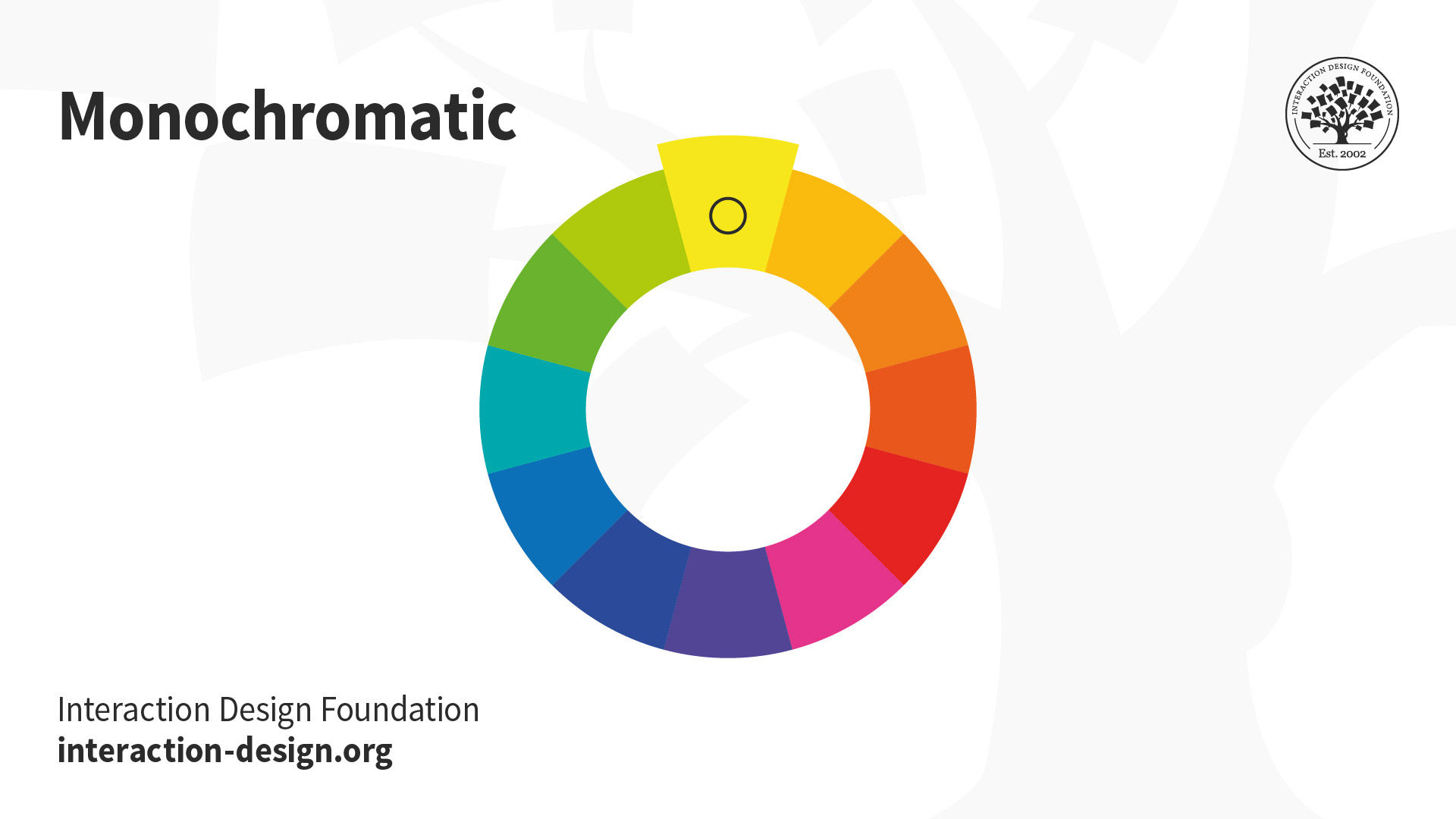
Monochromatic : Take one hue and create other elements from different shades and tints of it.
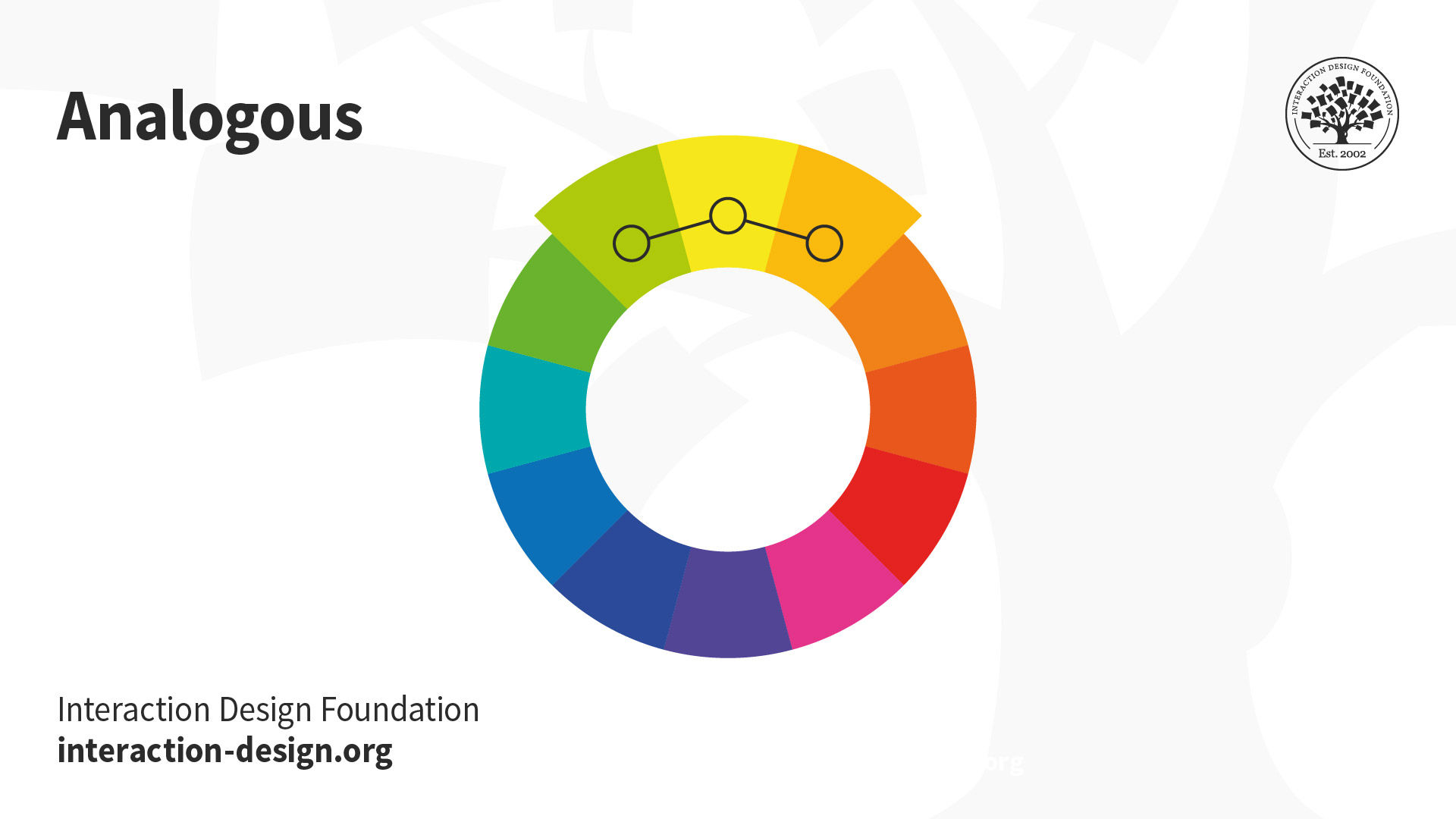
Analogous : Use three colors located beside one another on the color wheel (e.g., orange, yellow-orange and yellow to show sunlight). A variant is to mix white with these to form a “high-key” analogous color scheme (e.g., flames).
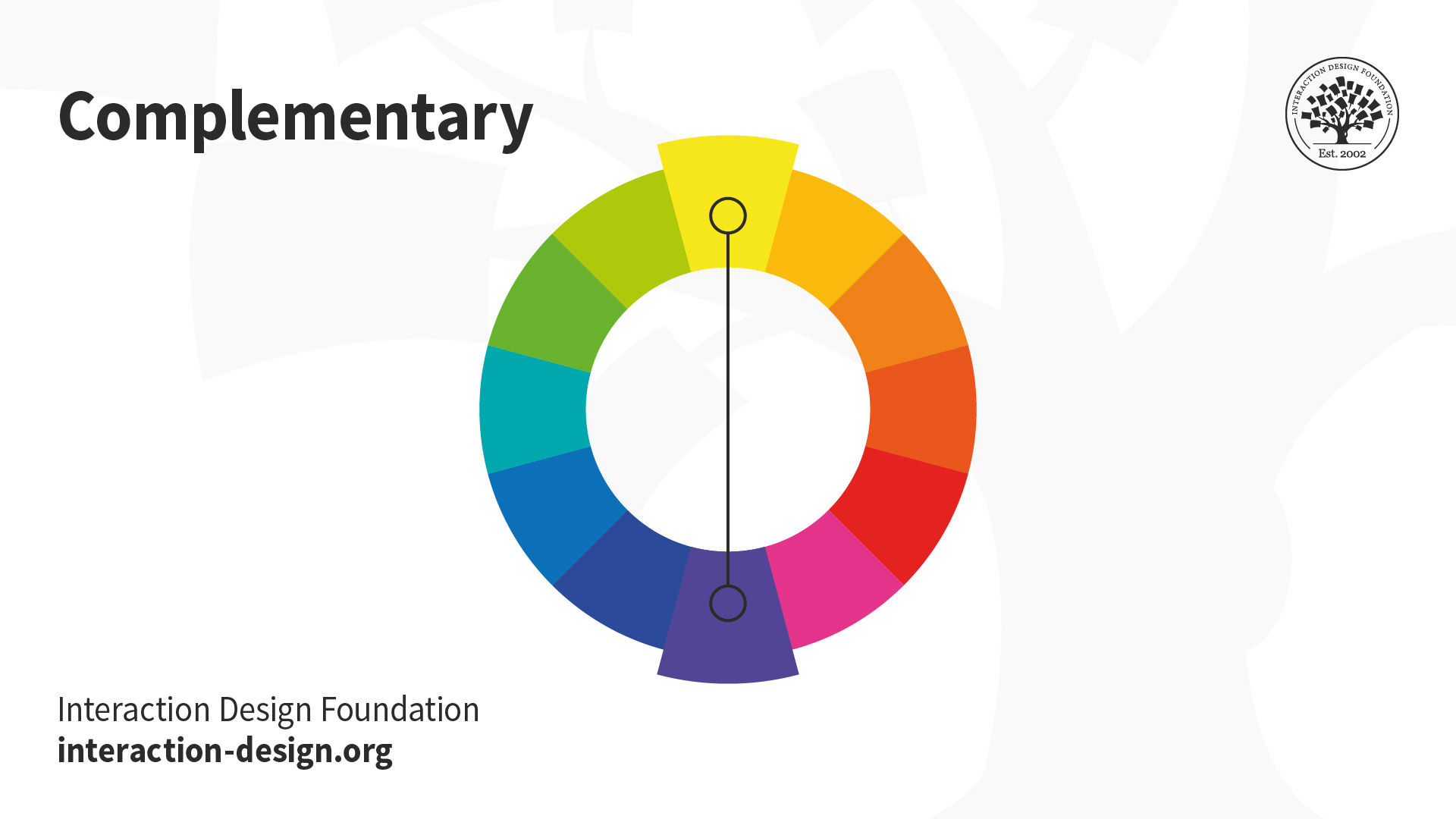
Complementary : Use “opposite color” pairs—e.g., blue/yellow—to maximize contrast.
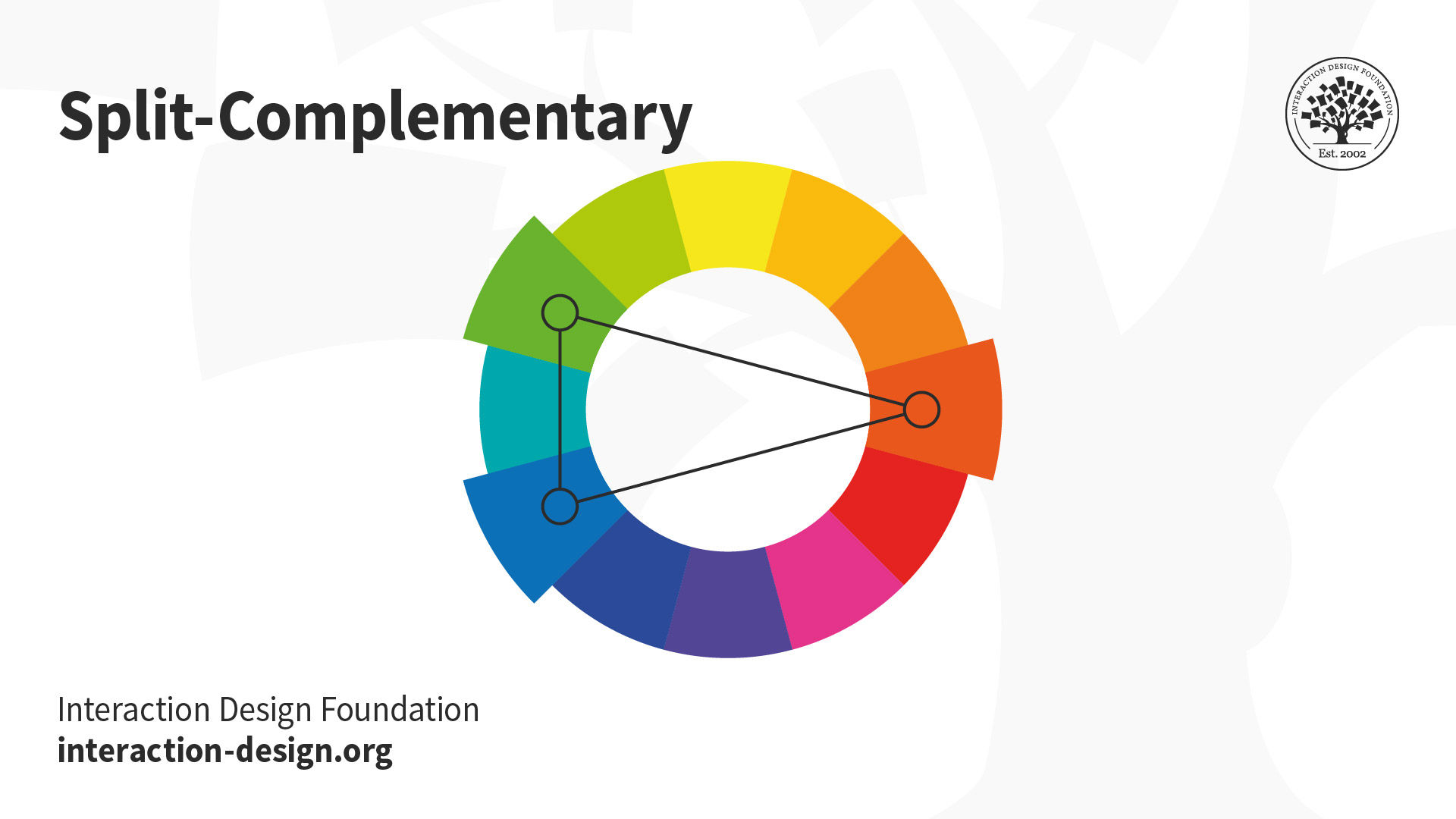
Split-Complementary (or Compound Harmony ): Add colors from either side of your complementary color pair to soften the contrast.
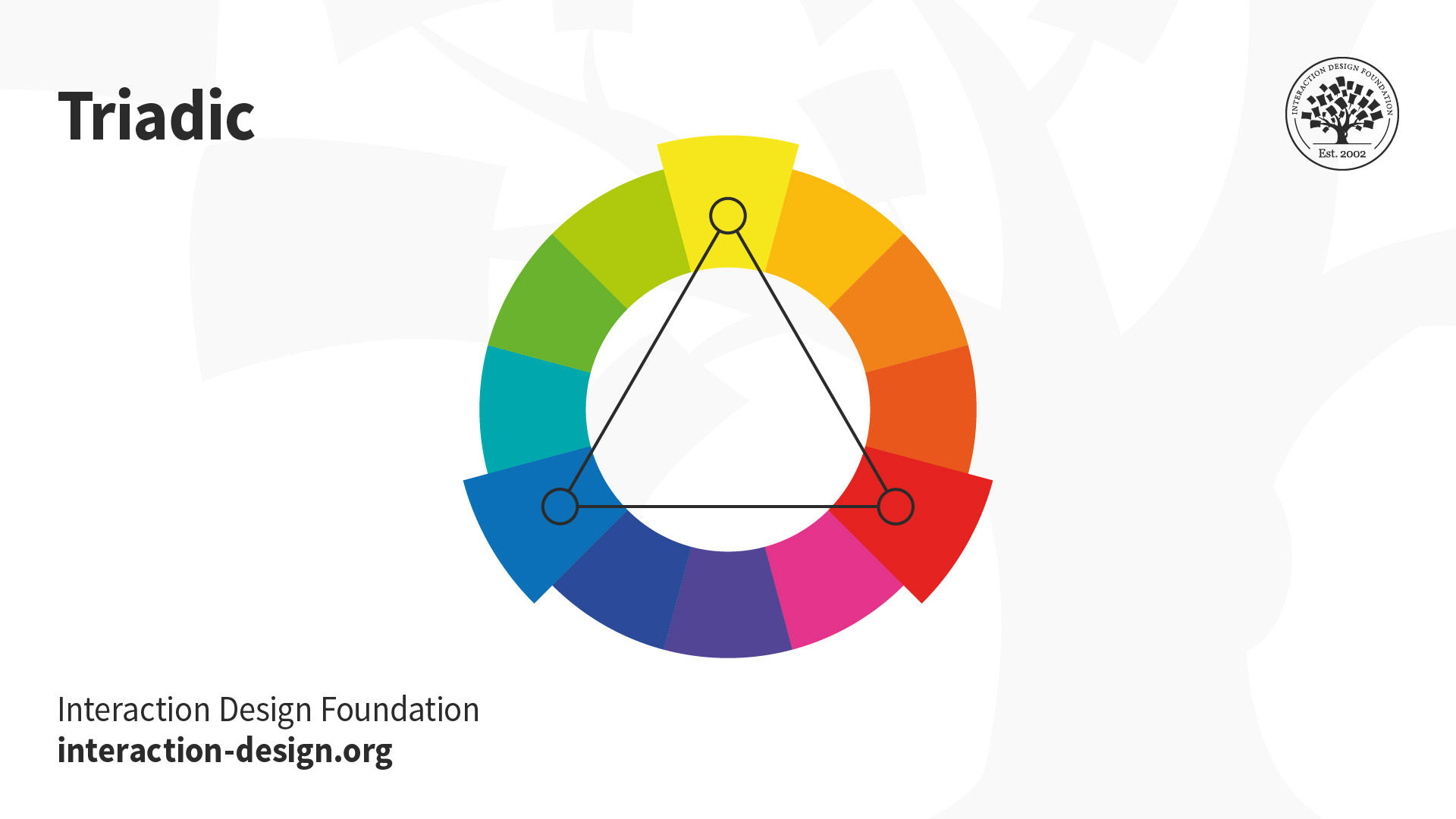
Triadic : Take three equally distant colors on the color wheel (i.e., 120° apart: e.g., red/blue/yellow). These colors may not be vibrant, but the scheme can be as it maintains harmony and high contrast. It’s easier to make visually appealing designs with this scheme than with a complementary scheme.
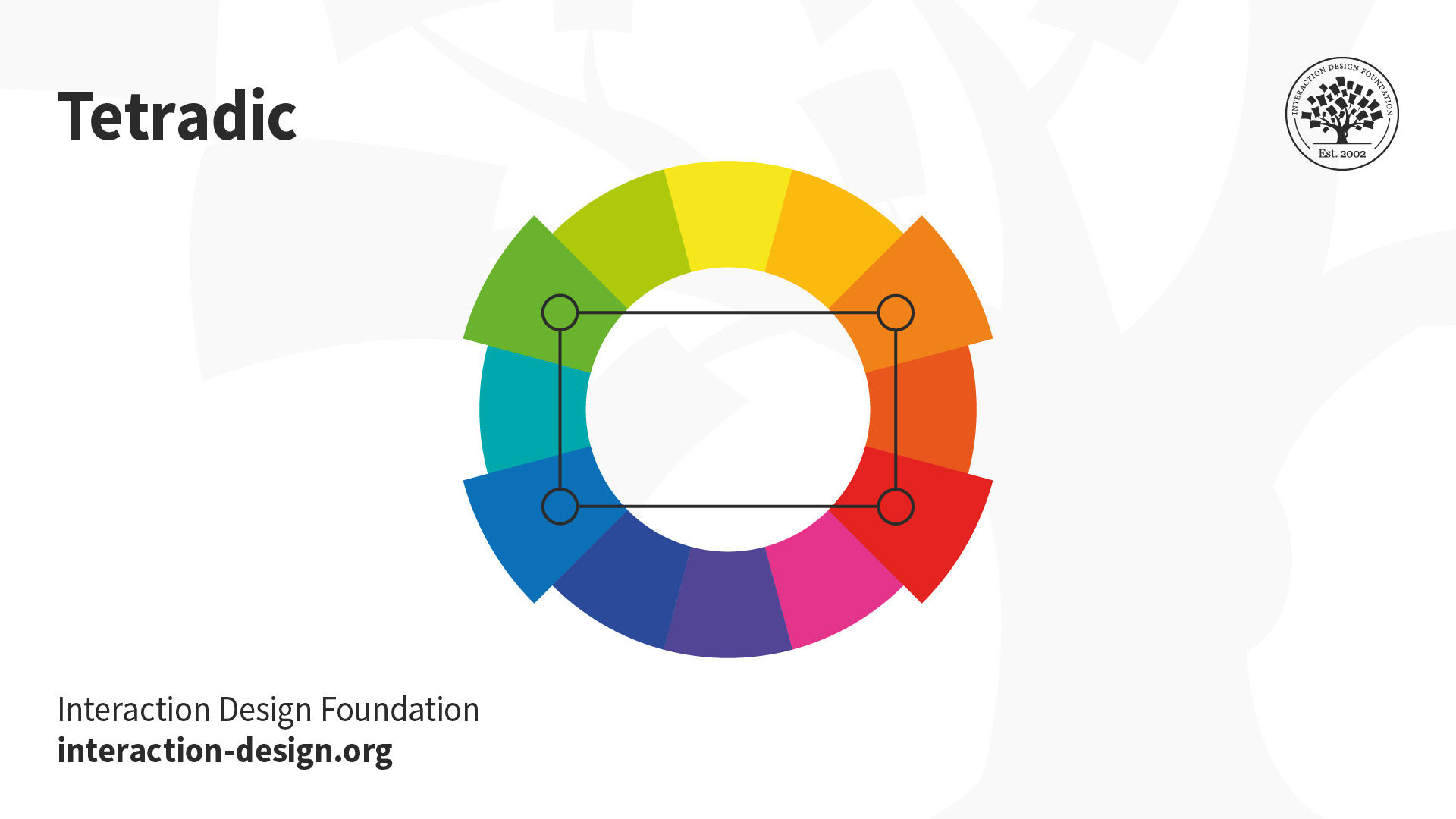
Tetradic : Take four colors that are two sets of complementary pairs (e.g., orange/yellow/blue/violet) and choose one dominant color. This allows rich, interesting designs. However, watch the balance between warm and cool colors.
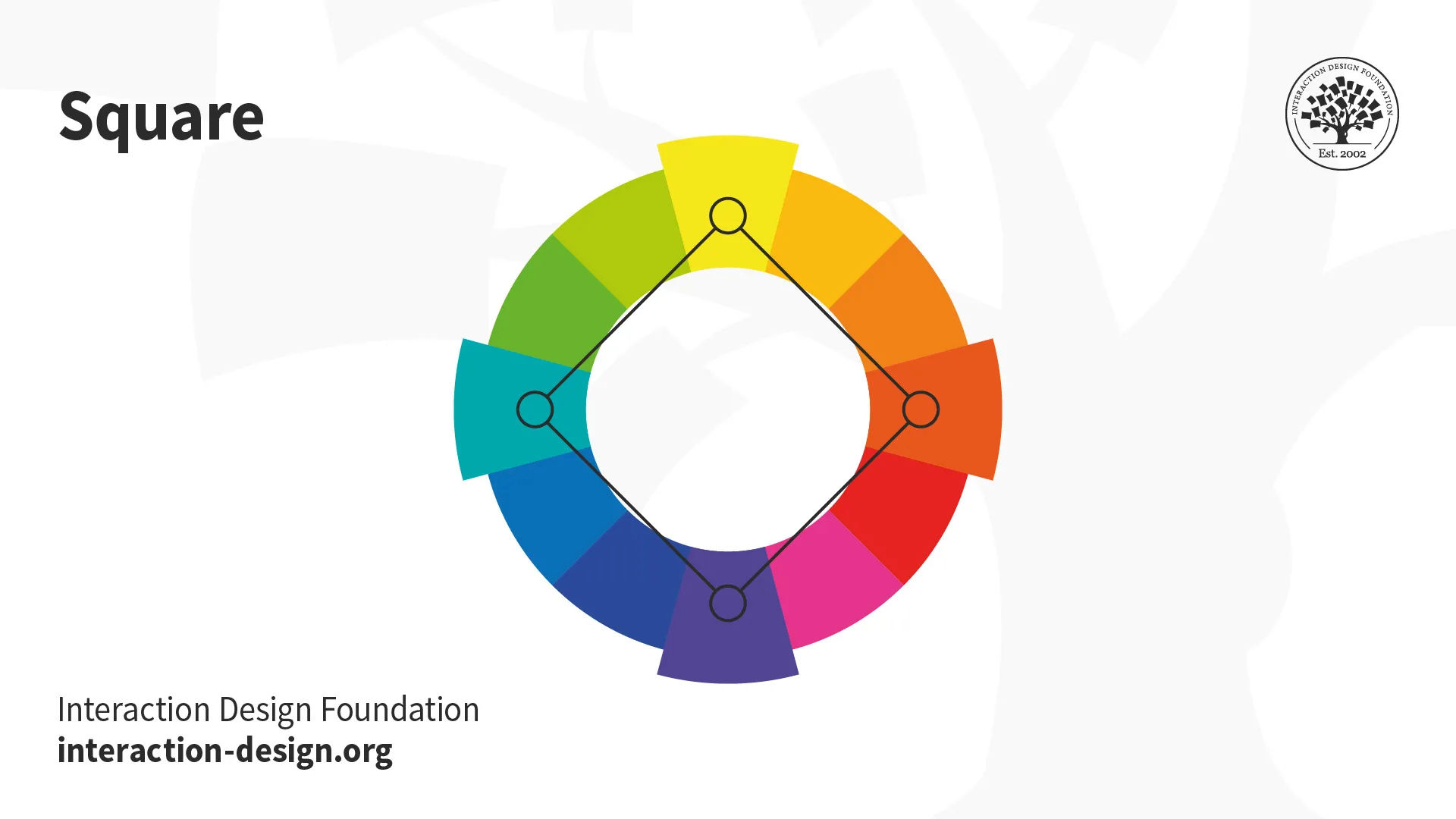
Square : A variant of tetradic; you find four colors evenly spaced on the color wheel (i.e., 90° apart). Unlike tetradic, square schemes can work well if you use all four colors evenly.
Your colors must reflect your design’s goal and the brand’s personality . You should also apply color theory to optimize a positive psychological impact on users . So, you should carefully determine how the color temperature (i.e., your use of warm, neutral and cool colors) reflects your message.
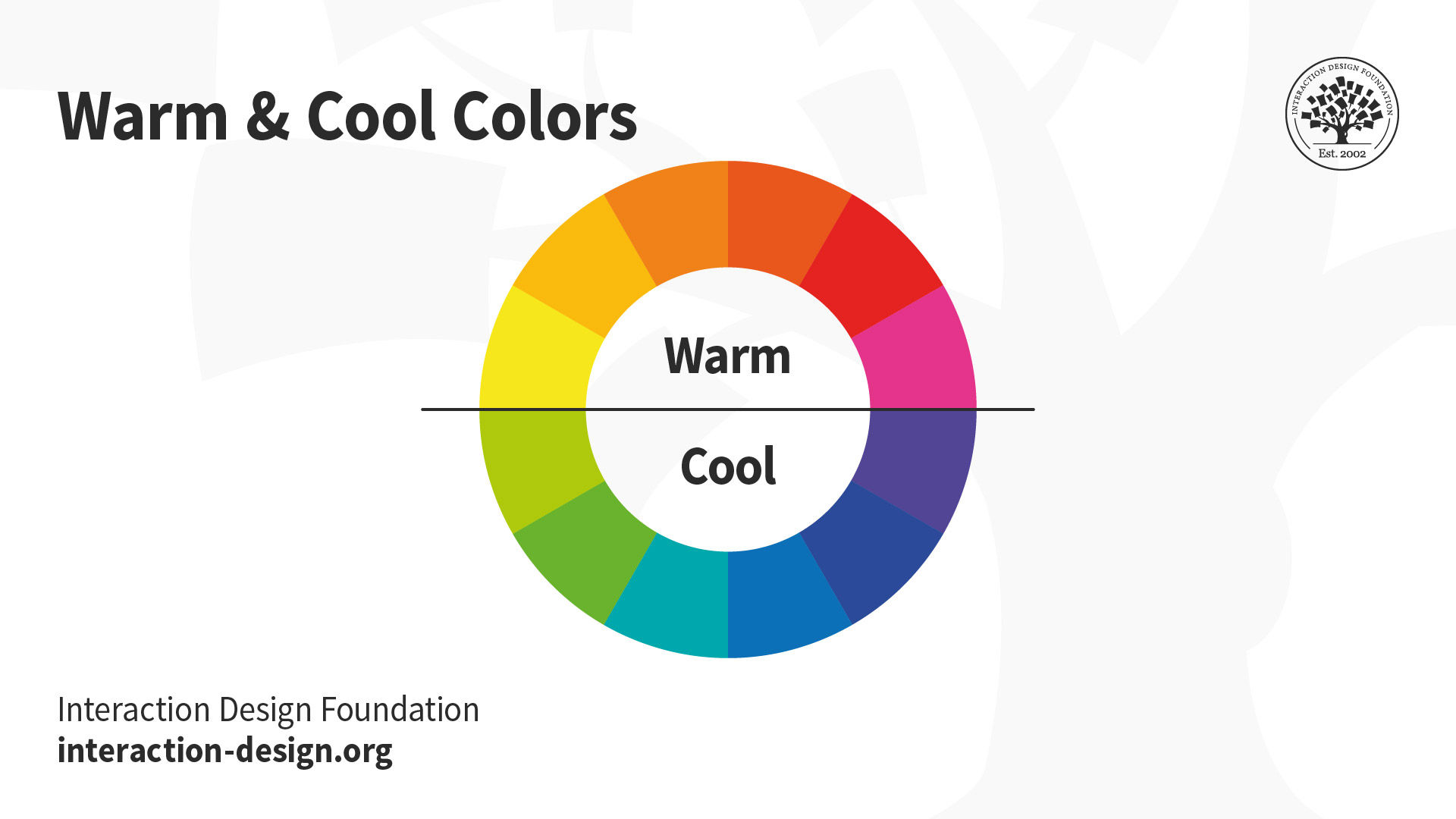
For example, you can make a neutral color such as grey warm or cool depending on factors such as your organization’s character and the industry.

Use Color Theory to Match What Your Users Want to See
The right contrast is vital to catching users’ attention in the first place. The vibrancy you choose for your design is likewise crucial to provoking desired emotional responses from users. How they react to color choices depends on factors such as gender, experience, age and culture. In all cases, you should design for accessibility —e.g., regarding red-green color blindness. You can fine-tune color choices through UX research to resonate best with specific users. Your users will encounter your design with their expectations of what a design in a certain industry should look like. That’s why you must also design to meet your market’s expectations geographically . For example, blue, an industry standard for banking in the West, has positive associations in other cultures.
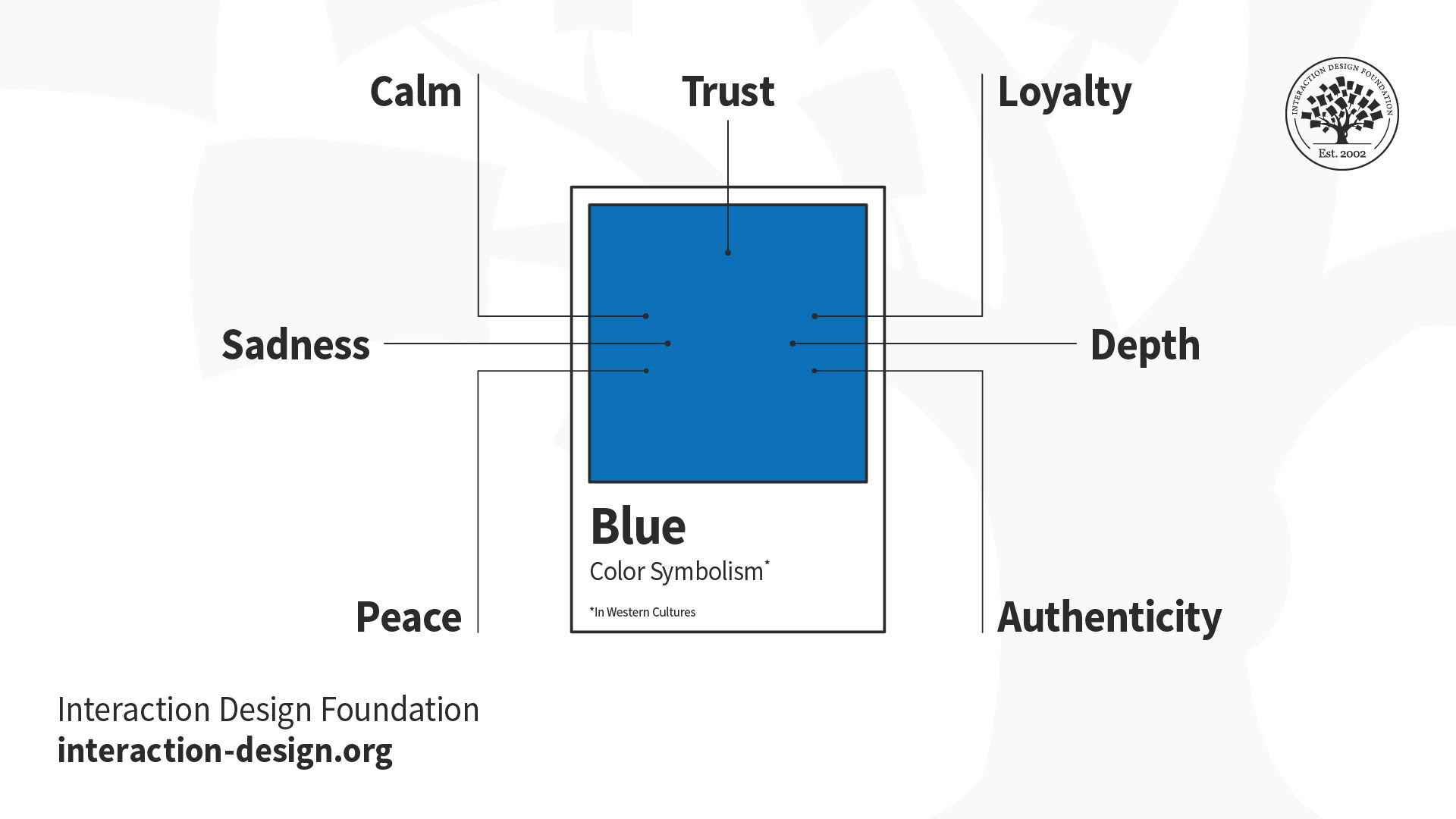
However, some colors can evoke contradictory feelings from certain nationalities (e.g., red: good fortune in China, mourning in South Africa, danger/sexiness in the USA). Overall, you should use usability testing to confirm your color choices.
Learn More about Color Theory
Take our course Visual Design: The Ultimate Guide .
Register for the How To Use Color Theory To Enhance Your Designs Master Class webinar with color experts Arielle Eckstut and Joann Eckstut.
See designer and author Cameron Chapman’s in-depth piece for insights, tips and examples of color theory at work.
For more on concepts associated with color theory and color scheme examples, read Tubik Studio’s guide .
Questions related to Color Theory
As an artist, it's important to have a solid understanding of color theory. This framework allows you to explore how colors interact and can be combined to achieve specific effects or reactions. It involves studying hues, tints, tones, and shades, as well as the color wheel and classifications of primary, secondary, and tertiary colors.
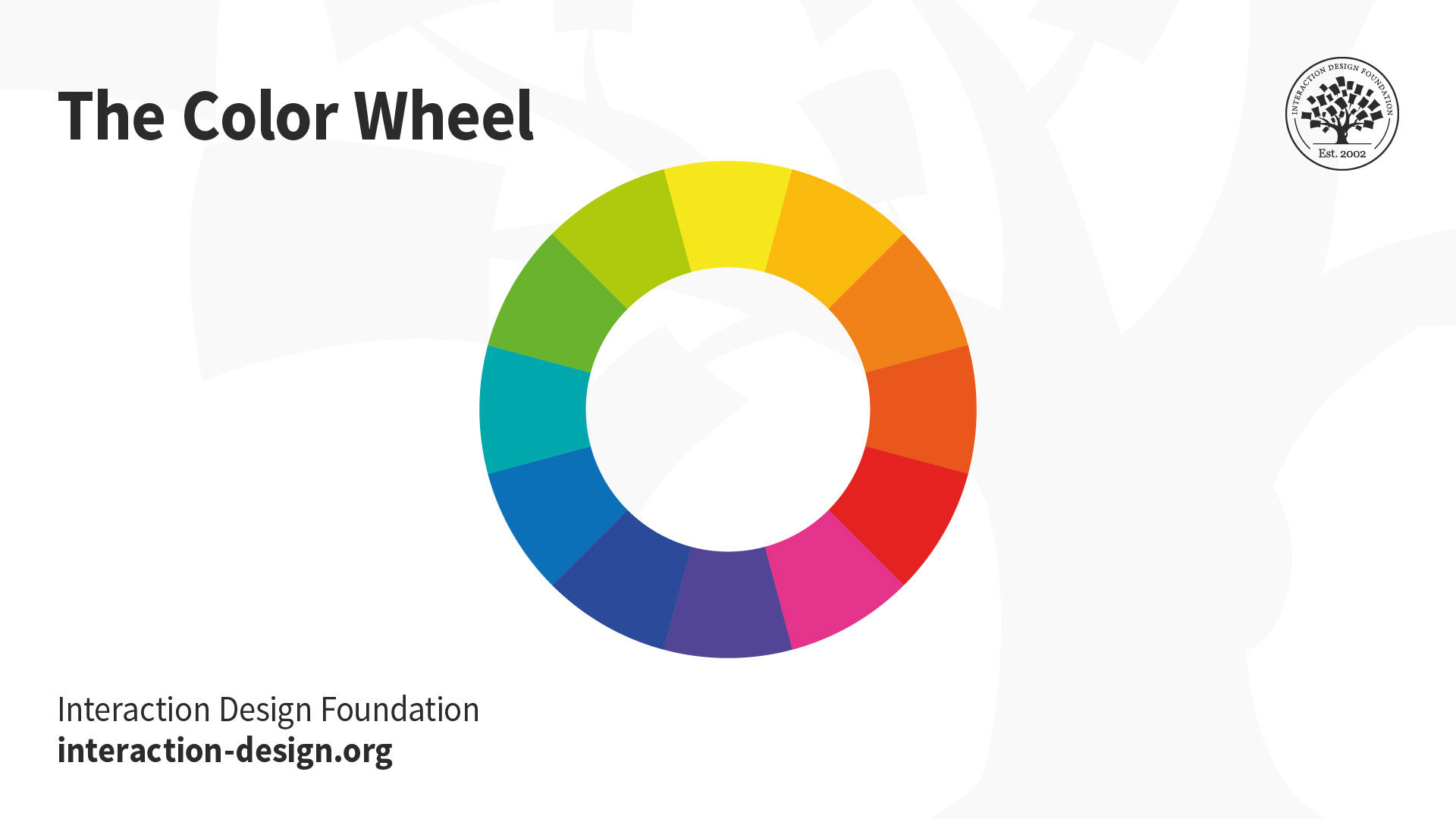
The Color Wheel © Interaction Design Foundation, CC BY-SA 4.0
Complementary and analogous colors are also important concepts to understand, as they can be used to create stunning color combinations. Additionally, color theory delves into the psychological effects of color, which can greatly impact the aesthetic and emotional impact of your art. By utilizing color theory, you can make informed decisions about color choices in your work and create art that truly resonates with your audience.
Color theory is a concept used in visual arts and design that explains how colors interact with each other and how they can be combined to create certain feelings, moods, and reactions. Arielle Eckstut, co-author of 'What Is Color? 50 Questions and Answers on the Science of Color,' explains that color does not exist outside of our perception, and different brains process visual information differently. Our retina, a part of the brain, plays a crucial role in color vision, and our brains constantly take in information from the outside world to inform us about our surroundings.
Watch this video for a deeper understanding of the science behind color:
To learn color theory, enroll in the ' Visual Design: The Ultimate Guide ' course on Interaction Design Foundation. This comprehensive course covers all aspects of visual design, including color theory. You will learn how colors interact with each other, how to combine them to create specific feelings and reactions, and how to use them effectively in your designs.
The course includes video lectures, articles, and interactive exercises that will help you master color theory and other key concepts of visual design. Start your journey to becoming a color theory expert by signing up for the course today !
Color theory helps us make sense of the world around us by providing a shorthand for using products, distinguishing objects, and interpreting information. For instance, colors can help us quickly identify pills in a bottle or different dosages.
Designers also consider cultural, personal, and biological influences on color perception to ensure the design communicates the right information. Ultimately, color helps us navigate the world safely, quickly, and with joy. Find out more about the significance of color in design by watching this video:
To use color theory effectively, consider the following tips from Joann Eckstut, co-author of 'What Is Color? 50 Questions and Answers on the Science of Color, in this video:
Understand the effect of light: Daylight constantly changes, affecting the colors we see. Changing the light source will change the color appearance of objects.
Consider the surroundings: Colors appear to change depending on the colors around them, a phenomenon known as simultaneous contrast.
Be aware of metamerism: Colors that match under one light source may not fit under another.
Remember that various factors such as light source and surrounding colors influence color, which is not a fixed entity. Being aware of these factors will prepare you to work effectively with color. Watch the full video for more insights and examples.
Color theory, as we know it today, is a culmination of ideas developed over centuries by various artists and scientists. However, one key figure in its development is Sir Isaac Newton, who, in 1666, discovered the color spectrum by passing sunlight through a prism. He then arranged these colors in a closed loop, creating the first color wheel. Johann Wolfgang von Goethe later expanded on this with his book "Theory of Colours" in 1810, exploring the psychological effects of colors.
Modern color theory has since evolved, incorporating principles from both Newton and Goethe, along with contributions from numerous other artists and researchers. To learn more about color theory, consider enrolling in the Visual Design - The Ultimate Guide course.
Understanding color theory might seem daunting at first, but it is manageable. Michal Malewicz emphasizes in the video below, that initially, a UX designer only needs three colors: a background color, a foreground (text) color, and an accent color.
It's advisable to start with fewer colors and gradually incorporate more as you become comfortable. Also, avoid color combinations like red mixed with saturated blue or green, and always test your colors for contrast and accessibility. Mastering color theory ultimately comes down to practice and observation. If it looks good, then it is good. For a comprehensive learning experience, consider enrolling in the Visual Design - The Ultimate Guide course on Interaction Design Foundation. Enroll now
Answer a Short Quiz to Earn a Gift
What are the primary colors according to traditional color theory?
- Red, blue, green
- Red, green, violet
- Red, yellow, blue
Why is an understanding of color theory crucial for UX design?
- It ensures that color use only conforms to brand guidelines.
- It helps guarantee that designs are visually appealing but not necessarily functional.
- It optimizes the visual and emotional impact of designs on the user.
How do colors influence psychological responses in graphic design?
- Colors can evoke specific emotions and affect how users understand information.
- Colors do not significantly impact the viewer’s emotions or perceptions.
- Colors primarily function to make the design beautiful without influencing user interaction.
What is the purpose of using complementary colors in design?
- To create a monochromatic look using shades of the same color on the color wheel.
- To increase visual impact and contrast by pairing opposite colors on the color wheel.
- To reduce visual contrast and blend elements more smoothly.
What does color temperature communicate in design?
- It dictates the physical temperature conditions a design must withstand.
- It only pertains to the design's color when viewed on digital screens.
- It uses warm, neutral and cool colors to evoke specific emotional states.
Better luck next time!
Do you want to improve your UX / UI Design skills? Join us now
Congratulations! You did amazing
You earned your gift with a perfect score! Let us send it to you.
Check Your Inbox
We’ve emailed your gift to [email protected] .
Literature on Color Theory
Here’s the entire UX literature on Color Theory by the Interaction Design Foundation, collated in one place:
Learn more about Color Theory
Take a deep dive into Color Theory with our course Visual Design: The Ultimate Guide .
In this course, you will gain a holistic understanding of visual design and increase your knowledge of visual principles , color theory , typography , grid systems and history . You’ll also learn why visual design is so important, how history influences the present, and practical applications to improve your own work. These insights will help you to achieve the best possible user experience.
In the first lesson, you’ll learn the difference between visual design elements and visual design principles . You’ll also learn how to effectively use visual design elements and principles by deconstructing several well-known designs.
In the second lesson, you’ll learn about the science and importance of color . You’ll gain a better understanding of color modes, color schemes and color systems. You’ll also learn how to confidently use color by understanding its cultural symbolism and context of use.
In the third lesson, you’ll learn best practices for designing with type and how to effectively use type for communication . We’ll provide you with a basic understanding of the anatomy of type, type classifications, type styles and typographic terms. You’ll also learn practical tips for selecting a typeface, when to mix typefaces and how to talk type with fellow designers.
In the final lesson, you’ll learn about grid systems and their importance in providing structure within design . You’ll also learn about the types of grid systems and how to effectively use grids to improve your work.
You’ll be taught by some of the world’s leading experts . The experts we’ve handpicked for you are the Vignelli Distinguished Professor of Design Emeritus at RIT R. Roger Remington , author of “American Modernism: Graphic Design, 1920 to 1960”; Co-founder of The Book Doctors Arielle Eckstut and leading color consultant Joann Eckstut , co-authors of “What Is Color?” and “The Secret Language of Color”; Award-winning designer and educator Mia Cinelli , TEDx speaker of “The Power of Typography”; Betty Cooke and William O. Steinmetz Design Chair at MICA Ellen Lupton , author of “Thinking with Type”; Chair of the Graphic + Interactive communication department at the Ringling School of Art and Design Kimberly Elam , author of "Grid Systems: Principles of Organizing Type.”
Throughout the course, we’ll supply you with lots of templates and step-by-step guides so you can go right out and use what you learn in your everyday practice.
In the “ Build Your Portfolio Project: Redesign ,” you’ll find a series of fun exercises that build upon one another and cover the visual design topics discussed. If you want to complete these optional exercises, you will get hands-on experience with the methods you learn and in the process you’ll create a case study for your portfolio which you can show your future employer or freelance customers.
You can also learn with your fellow course-takers and use the discussion forums to get feedback and inspire other people who are learning alongside you. You and your fellow course-takers have a huge knowledge and experience base between you, so we think you should take advantage of it whenever possible.
You earn a verifiable and industry-trusted Course Certificate once you’ve completed the course. You can highlight it on your resume , your LinkedIn profile or your website .
All open-source articles on Color Theory
The key elements & principles of visual design.

- 1.1k shares
Recalling Color Theory Keywords: a way to refresh your memories!

- 3 years ago
Dressing Up Your UI with Colors That Fit

UI Color Palette 2024: Best Practices, Tips, and Tricks for Designers
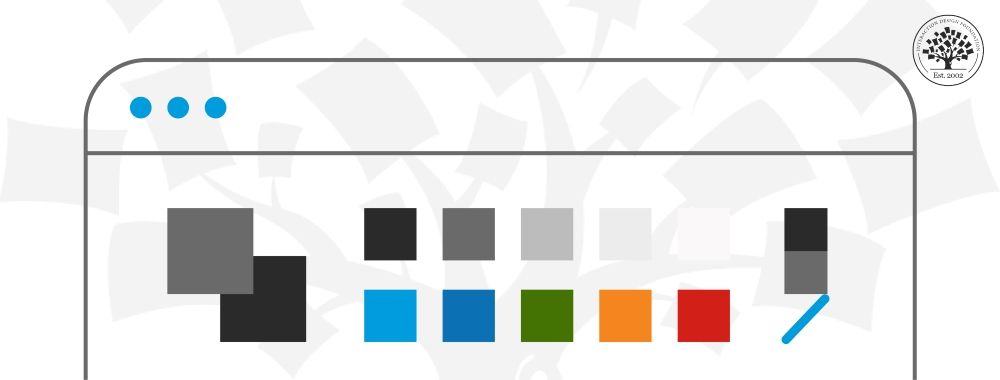
Everything You Need To Know About Triadic Colors
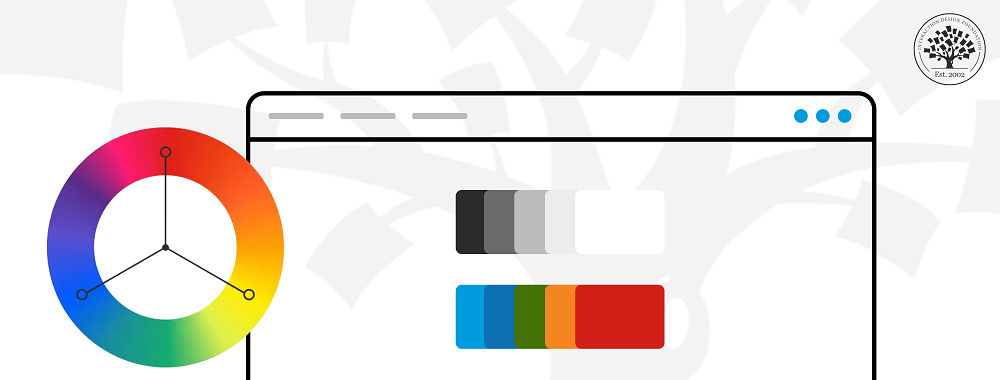
Complementary Colors: The Ultimate Guide in 2024
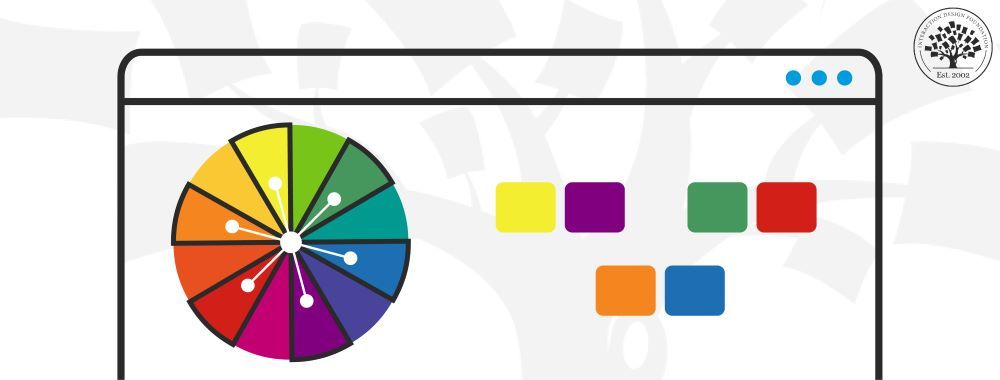
Learn the Role of Perception and Memory in HCI and UX

- 2 weeks ago
Open Access—Link to us!
We believe in Open Access and the democratization of knowledge . Unfortunately, world-class educational materials such as this page are normally hidden behind paywalls or in expensive textbooks.
If you want this to change , cite this page , link to us, or join us to help us democratize design knowledge !
Privacy Settings
Our digital services use necessary tracking technologies, including third-party cookies, for security, functionality, and to uphold user rights. Optional cookies offer enhanced features, and analytics.
Experience the full potential of our site that remembers your preferences and supports secure sign-in.
Governs the storage of data necessary for maintaining website security, user authentication, and fraud prevention mechanisms.
Enhanced Functionality
Saves your settings and preferences, like your location, for a more personalized experience.
Referral Program
We use cookies to enable our referral program, giving you and your friends discounts.
Error Reporting
We share user ID with Bugsnag and NewRelic to help us track errors and fix issues.
Optimize your experience by allowing us to monitor site usage. You’ll enjoy a smoother, more personalized journey without compromising your privacy.
Analytics Storage
Collects anonymous data on how you navigate and interact, helping us make informed improvements.
Differentiates real visitors from automated bots, ensuring accurate usage data and improving your website experience.
Lets us tailor your digital ads to match your interests, making them more relevant and useful to you.
Advertising Storage
Stores information for better-targeted advertising, enhancing your online ad experience.
Personalization Storage
Permits storing data to personalize content and ads across Google services based on user behavior, enhancing overall user experience.
Advertising Personalization
Allows for content and ad personalization across Google services based on user behavior. This consent enhances user experiences.
Enables personalizing ads based on user data and interactions, allowing for more relevant advertising experiences across Google services.
Receive more relevant advertisements by sharing your interests and behavior with our trusted advertising partners.
Enables better ad targeting and measurement on Meta platforms, making ads you see more relevant.
Allows for improved ad effectiveness and measurement through Meta’s Conversions API, ensuring privacy-compliant data sharing.
LinkedIn Insights
Tracks conversions, retargeting, and web analytics for LinkedIn ad campaigns, enhancing ad relevance and performance.
LinkedIn CAPI
Enhances LinkedIn advertising through server-side event tracking, offering more accurate measurement and personalization.
Google Ads Tag
Tracks ad performance and user engagement, helping deliver ads that are most useful to you.
Share Knowledge, Get Respect!
or copy link
Cite according to academic standards
Simply copy and paste the text below into your bibliographic reference list, onto your blog, or anywhere else. You can also just hyperlink to this page.
New to UX Design? We’re Giving You a Free ebook!

Download our free ebook The Basics of User Experience Design to learn about core concepts of UX design.
In 9 chapters, we’ll cover: conducting user interviews, design thinking, interaction design, mobile UX design, usability, UX research, and many more!
How does 'not' affect what we understand? Scientists find negation mitigates our interpretation of phrases
New study shows how the brain builds new meanings through word combinations.
When we're told "This coffee is hot" upon being served a familiar caffeinated beverage at our local diner or cafe, the message is clear. But what about when we're told "This coffee is not hot"? Does that mean we think it's cold ? Or room temperature? Or just warm?
A team of scientists has now identified how our brains work to process phrases that include negation (i.e., "not"), revealing that it mitigates rather than inverts meaning -- in other words, in our minds, negation merely reduces the temperature of our coffee and does not make it "cold."
"We now have a firmer sense of how negation operates as we try to make sense of the phrases we process," explains Arianna Zuanazzi, a postdoctoral fellow in New York University's Department of Psychology at the time of the study and the lead author of the paper, which appears in the journal PLOS Biology . "In identifying that negation serves as a mitigator of adjectives -- 'bad' or 'good,' 'sad' or 'happy,' and 'cold' or 'hot' -- we also have a better understanding of how the brain functions to interpret subtle changes in meaning."
In an array of communications, ranging from advertising to legal filings, negation is often used intentionally to mask a clear understanding of a phrase. In addition, large language models in AI tools have difficulty interpreting passages containing negation. The researchers say that their results show how humans process such phrases while also potentially pointing to ways to understand and improve AI functionality.
While the ability of human language to generate novel or complex meanings through the combination of words has long been known, how this process occurs is not well understood.
To address this, Zuanazzi and her colleagues conducted a series of experiments to measure how participants interpreted phrases and also monitored participants' brain activity during these tasks -- in order to precisely gauge related neurological function.
In the experiments, participants read -- on a computer monitor -- adjective phrases with and without negation (e.g., "really not good" and "really really good") and rated their meaning on a scale from 1 ("really really bad") to 10 ("really really good") using a mouse cursor. This scale was designed, in part, to determine if participants interpreted phrases with negation as the opposite of those without negation -- in other words, did they interpret "really not good" as "bad" -- or, instead, as something more measured?
Here, the researchers found that participants took longer to interpret phrases with negation than they did phrases without negation -- indicating, not surprisingly given the greater complexity, that negation slows down our processing of meaning. In addition, drawing from how the participants moved their cursors, negated phrases were first interpreted as affirmative (i.e., "not hot" was initially interpreted as closer to "hot" than to "cold"), but later shifted to a mitigated meaning, suggesting that, for instance, "not hot" is not interpreted as either "hot" or "cold," but, rather, as something between "hot" and "cold."
The scientists also used magnetoencephalography (MEG) to measure the magnetic fields generated by the electrical activity of participants' brains while they were performing these phrase-interpretation tasks. As with the behavioral experiments, neural representations of polar adjectives such as "cold" and "hot" were made more similar by negation, suggesting that the meaning of "not hot" is interpreted as "less hot" and the meaning of "not cold" as "less cold," becoming less distinguishable. In sum, neural data matched what was observed for the mouse movements in the behavioral experiments: negation does not invert the meaning of "hot" to "cold," but rather weakens or mitigates its representation along the semantic continuum between "cold" and "hot."
"This research spotlights the complexity that goes into language comprehension, showing that this cognitive process goes above and beyond the sum of the processing of individual word meanings," observes Zuanazzi, now at the Child Mind Institute.
The paper's other authors were: Pablo Ripollés, an assistant professor in NYU's Department of Psychology and associate director of Music and Audio Research Laboratory at NYU's Steinhardt School of Culture, Education, and Human Development; Jean-Rémi King, a researcher at France's École Normale Supérieure; Wy Ming Lin, a doctoral student at the University of Tübingen; Laura Gwilliams, an NYU doctoral student at the time of the study; and David Poeppel, a professor in NYU's Department of Psychology and managing director of the Ernst Strüngmann Institute for Neuroscience in Frankfurt, Germany.
The research was supported by a grant from the National Science Foundation (2043717).
- Language Acquisition
- Intelligence
- Brain-Computer Interfaces
- Social Psychology
- Child Development
- Psychoactive drug
- Circadian rhythm
- Intellectual giftedness
Story Source:
Materials provided by New York University . Original written by James Devitt. Note: Content may be edited for style and length.
Journal Reference :
- Arianna Zuanazzi, Pablo Ripollés, Wy Ming Lin, Laura Gwilliams, Jean-Rémi King, David Poeppel. Negation mitigates rather than inverts the neural representations of adjectives . PLOS Biology , 2024; 22 (5): e3002622 DOI: 10.1371/journal.pbio.3002622
Cite This Page :
Explore More
- Giant Viruses Found On Greenland Ice Sheet
- Using AI to Decode Dog Vocalizations
- Humans and Woolly Rhinoceros' Extinction
- More Summer Droughts for Northern Hemisphere
- All Electrical Needs from Floating Solar Panels?
- Over 60% of US People Likely to Have CVD by 2050
- Gigantic Jurassic Pterosaur Fossil Unearthed
- Bringing Back an Ancient Bird
- How Quantum Field Theories Decay and Fission
- River Nile's Evolution During Ancient Egypt
Trending Topics
Strange & offbeat.

IMAGES
VIDEO
COMMENTS
1. "cool" analysis, technical, like structural analysis or the repertory grid, and 2. "warm" analysis, wherein empathy is integral to the analysis, such as in phenomenology or hermeneutics. The variations will become clear as we look at them. So let's get to it!
Warm data is about uncovering what's happening in the world in all its complexity, and analyzing all the parts of a system. It's data that is hard to study, and often not done justice too. You can read more here. Of course there is other data that we must think about and conceptualize too. To some extent, there is a bias for quantified data ...
For many researchers unfamiliar with qualitative research, determining how to conduct qualitative analyses is often quite challenging. Part of this challenge is due to the seemingly limitless approaches that a qualitative researcher might leverage, as well as simply learning to think like a qualitative researcher when analyzing data. From framework analysis (Ritchie & Spencer, 1994) to content ...
Thematic Analysis - A Guide with Examples. Thematic analysis is one of the most important types of analysis used for qualitative data. When researchers have to analyse audio or video transcripts, they give preference to thematic analysis. A researcher needs to look keenly at the content to identify the context and the message conveyed by the ...
What is meant by thematic analysis? The main objective of research is to order data into meaningful patterns and generate new knowledge arising from theories about that data. Quantitative data is analyzed to measure a phenomenon's quantifiable aspects (e.g., an element's melting point, the effective income tax rate in the suburbs). The advantage of quantitative research is that data is often ...
Qualitative Treatment or analysis of qualitative data has a usual general process. I quote from UST Professor, Dr. De Guzman in the use of cool and warm analysis, which begins the process. For a reference to Dr. De Guzman here's a link.
Warm Data provides cross-sector interrelational information because it is the outcome of a research approach premised upon the transcontextual interaction inherent in any system. This sort of ...
This enables the researchers to observe both the cool and warm analyses of the information collected from the participants. The cool analysis part consisted of the participants' significant points or statements. These statements were the basis for the warm analysis stage wherein the categorization of data was formulated and that the themes
This qualitative study explored the phenomenological experience of cool as retrospectively reported. I proposed cool as a phenomenological concept and advocate for the consideration of cool as relevant to clinical psychology through first, a literature review of related academic research and second, by identifying the information gap around cool as it intersects with clinical psychology.
The effect of physical temperature on cognition and behavior has been the focus of extensive research in recent years, demonstrating that embodied concepts are grounded in, and shaped by, sensorimotor physical experiences. Nevertheless, less is known about how experienced and perceived temperatures affect cognitive control, one of humans core executive functions. In the present work, we primed ...
The past decade has seen enhanced interest in research in the area of color and psychological functioning. Progress has been made on both theoretical and empirical fronts, but there are also weaknesses on both of these fronts that must be attended to for this research area to continue to make progress. In the following, I briefly review both ...
Statistical analysis. Analysis of variance (ANOVA) and multivariate ordinal regression model were carried out using software R Version 3.1.2 to determine the most important variables (components) affecting food cold/hot properties. ANOVA was used to analyze the mean differences of each individual variable among cool, plain, and hot groups.
Multi-dimensional analysis for streams. Rapid Data Exploration. Fast ad-hoc queries on TBs to PBs of data. Customer-facing Analytics. Interactive insights for external users. Real-time Decisioning. Instant queries for automated pipelines
As expected, the adjectives warm, cool, hot, mild, cold and chilly were cited most frequently during the study period; the relative order of the terms was reflective of the weather and climatic characteristics of the cities observed during the study, and the verbosity of the forecasters who wrote the narratives. In the analysis that follows ...
The main analysis highlights the following: First, we replicate prior research on warm vs. cool ambient scents' effects on premium product preferences. Extending these results to a FMCG product, namely coffee-to-go brands, we show that consumers under warm (vs. cool) ambient scents have a higher preference for the status-related premium brand ...
In short, the particular dimension warm versus cold makes a big difference in how we perceive people—much bigger than do other traits. As a result, the traits of warm and cold are known as central traits, which are characteristic s that have a very strong influence on our impressions of others (Asch, 1946). The powerful influence of central ...
The directive is to determine whether you are a "warm type" or "cool type." The 4 season color analysis directs you to apply a yellow-based (warm) foundation and pink based (cool ...
Cool and warm analyses were performed to examine the qualitative responses of the participants. ... All the data was analyzed by using contents analysis. Research finding has shown that two hours ...
The document provides instructions for an exercise to analyze qualitative research statements using cool and warm analysis. Students are asked to categorize 30 statements about reasons for joining helping professions using codes. They then describe the categories and themes identified and create a simulacrum based on the analysis. The goal is to surface themes related to the central question ...
at self-control. The balance between the hot and cool systems is determined by stress, developmental level, and the individual's self-regulatory dynamics. The interactions between these systems allow explanation of findings on willpower from 3 decades of research. The question that we address here is, if humans initially are
Download scientific diagram | Example of warm-cold correlation analysis, illustrating the meaning of the correlation parameters (scaling factor and offset) and correlation quality indicators. The ...
SIMULACRUM - Free download as Word Doc (.doc / .docx), PDF File (.pdf), Text File (.txt) or read online for free. The document summarizes a workshop exercise on cool and warm analysis to identify themes in qualitative research on how employees adjust to working from home. Participants analyzed 25 statements and identified 10 categories within 3 ...
A little research goes a long way. However, if you want to follow the color wheel approach, there are three indicators of color temperature: "warm" and "cool" and "neutral": Warm colors-These are colors located on the half of the color wheel that includes yellow, orange, and red. These colors are said to reflect feelings such as ...
A team of scientists has now identified how our brains work to process phrases that include negation (i.e., "not"), revealing that it mitigates rather than inverts meaning -- in other words, in ...